The pan-European magazine for the professional cleaning sector
OCTOBER 2025
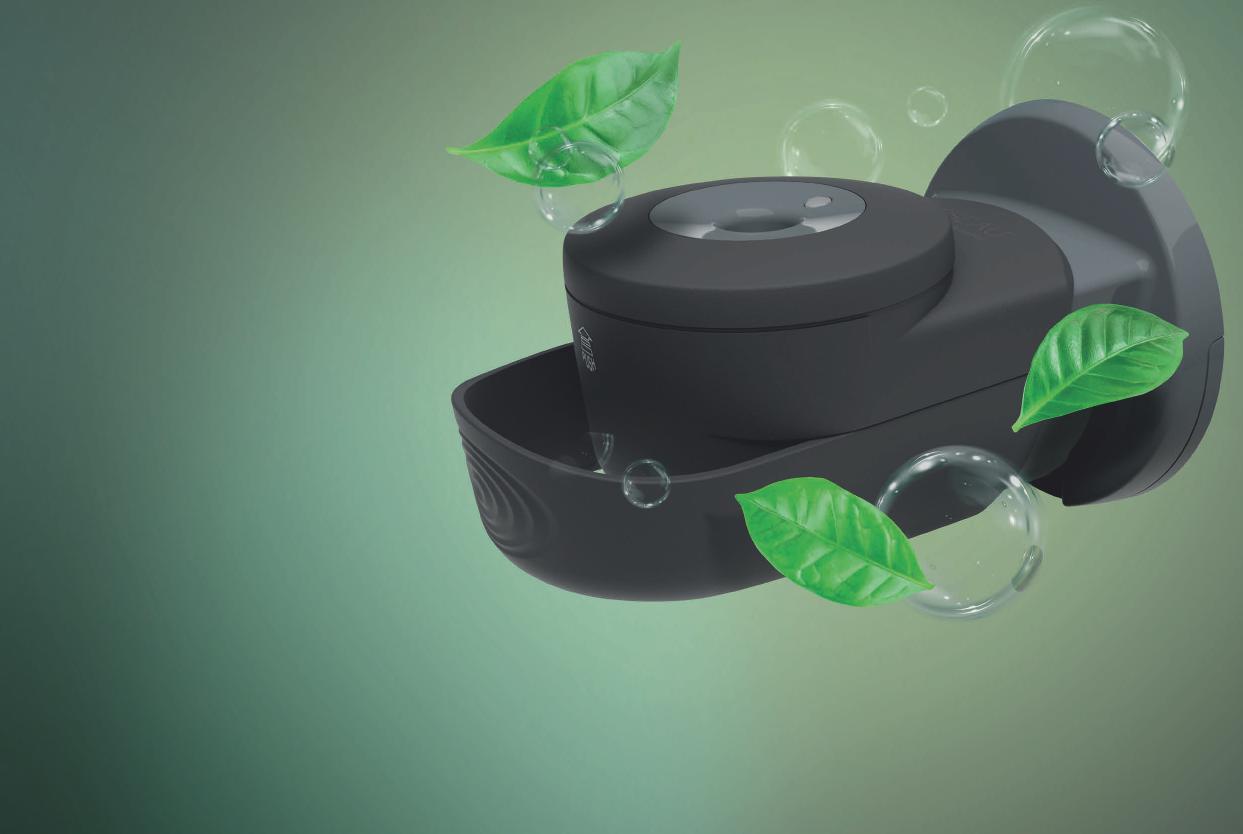
Read
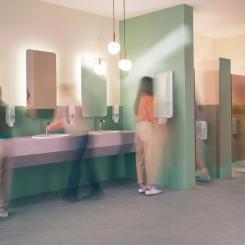


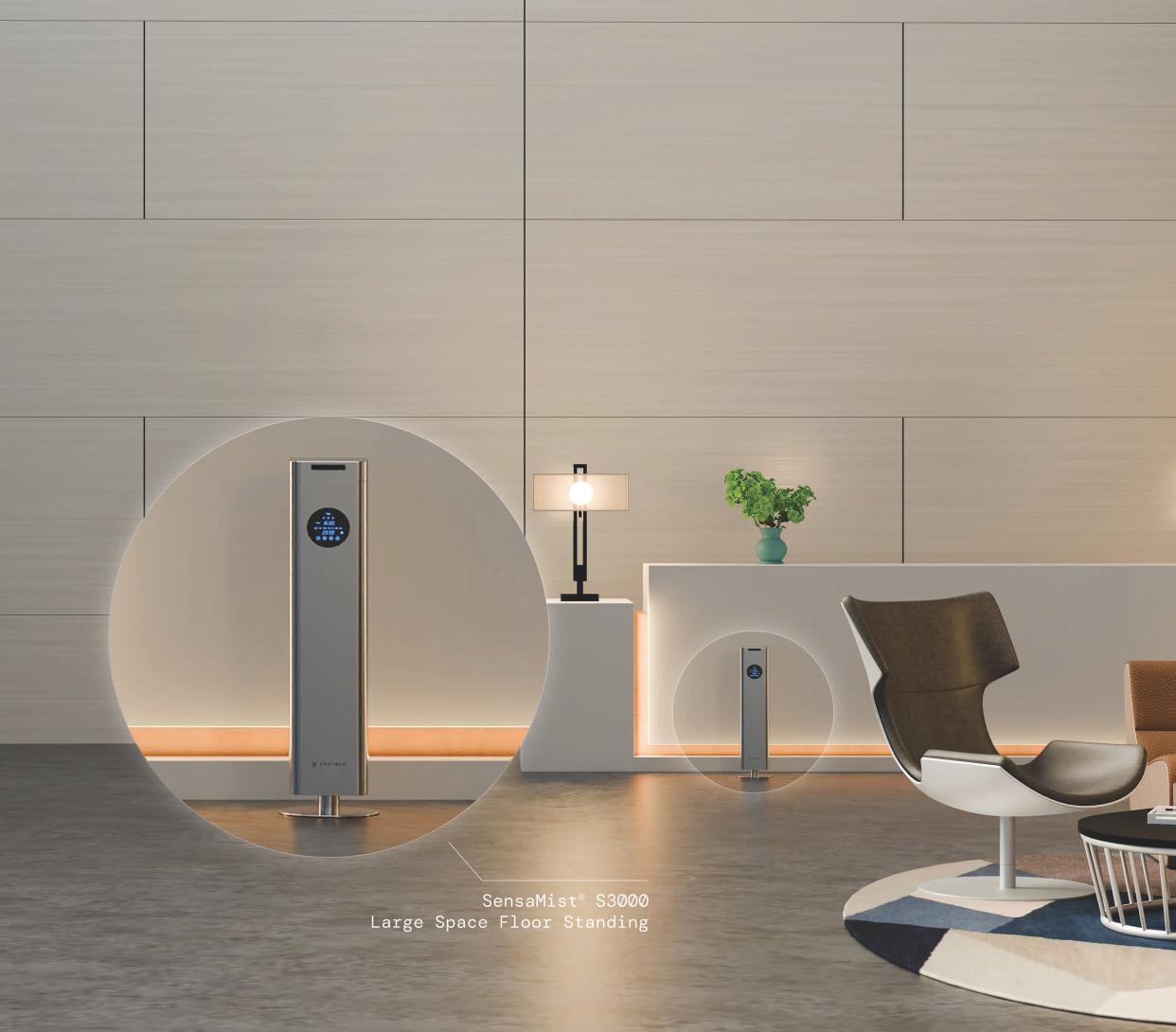
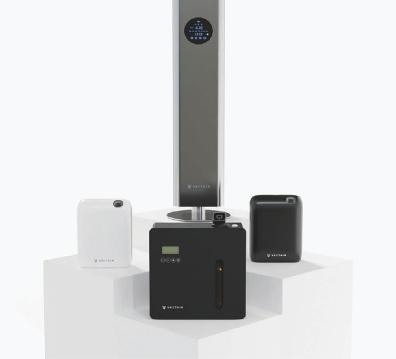

The pan-European magazine for the professional cleaning sector
OCTOBER 2025

Read





34 Brussels tackles red tape
Hartley Milner on how Brussels is rowing back on sustainability reporting for businesses

The people pleasers
People are one of the three pillars of sustainability - are they often forgotten?

Toilet challenges
Hygiene in public washrooms still comes with challenges.
Are no-touch dispensers in the washroom now becoming the norm?
Do we need a human?
In the age of the robot, where do human operatives fit in to floor care?
From oversight to insight
How smart auditing tech is evolving into a real-time performance enabler.
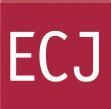
Battery choices
What are the various battery types that can be used in a cleaning machine?
Criterion Publishing Ltd
Castle House, 89 High Street
Berkhamsted HP4 2DF, UK
T +44 (0)1494 791222
F +44 (0)1494 792223
info@europeancleaningjournal.com www. europeancleaningjournal.com
Subscriptions
UK - £60 / Continental Europe - £70 / International - £80
Editor Michelle Marshall
Features Writer Ann Laffeaty
Advertisement director
Chris Godman
Advertisement sales executive
Laura Bell
Circulation Marie Payne
Italy, Spain & Switzerland Fabio Potesta Mediapoint & Communications
Corte Lambruschini, Corso Buenos Aires, 8 V0 Piano, Interno 7 16129 Genova, Italy
T +39 010 570 4948
F +39 010 553 0088 info@mediapointsrl.it www. mediapointsrl.it
Interclean is blooming early in 2026! Join the community, expand your network and close deals at Interclean Amsterdam from 14-17 April 2026, your most efficient and enjoyable business trip every two years.
14 – 17 April 2026
RAI Amsterdam, Netherlands

Tork, an Essity brand and specialist in professional hygiene systems, has published the findings of a global Insight Survey of end users and cleaning staff that explored attitudes toward hygiene in washrooms.
Significant societal shifts have taken place with regards to awareness and accommodation of individual physical circumstances and conditions in washrooms in public spaces and the workplace. Changing places are more commonly seen in shopping centres and disabled toilet cubicles are incorporated into the design of public washrooms, signposted by the wheelchair sign. However, globally 95 per cent of people who report physical or cognitive conditions are not in a wheelchair.
The global Tork Insight Survey reveals many needs remain unrecognised in washroom design and maintenance. In fact globally, one in two people are likely to face barriers to hygiene in washrooms meaning there is a disconnect between their capabilities or needs and the washroom environment.
33 per cent of those who report a physical or cognitive condition have skin sensitivity, 29 per cent have anxiety and 22 per cent have rheumatism. Such sensory sensitivities, cognitive conditions or paruresis (shy bladder) can result in people refraining from using washrooms or being able to fully meet their needs in the washroom.
In the UK, 17 per cent of those who report a physical condition suffer from a skin sensitivity such as eczema, which can be aggravated by harsh soaps, and 12 per cent are challenged by arthritis or suffer from chronic pain, which can make using toilet paper and accessing soap from dispensers difficult. Drawing similarities with the global view that one in five washrooms do not meet hygiene cleanliness expectations, 24 per cent of people surveyed in
the UK cite ‘unhygienic’ as a reason for never using or having avoided a washroom, and 50 per cent say they have not used a washroom at a venue even though they needed to. Overall, in line with disappointing global survey stats, 83 per cent of end users surveyed in the UK are concerned about hygiene in public washrooms.
“Eight out of 10 people globally have concerns about washroom rooms - a figure that’s even higher for those with certain physical or cognitive conditions,” said Olivia Slater, commercial director at Essity Professional Hygiene. Impact on business
“When a washroom fails to meet these diverse needs, it directly impacts a business’s reputation and revenue. This is one reason why ‘hygiene for all’ is a core pillar of our sustainability strategy. By focusing on inclusive hygiene, we help organisations create better experiences that serve as many people as possible, including the cleaning staff who maintain these vital spaces.”
The research, which surveyed 11,500 people across 11 countries, shows there are high expectations for hygiene and cleanliness in the washroom.
Seventy-four per cent expect moderate or high levels of hygiene. Yet only 20 per cent of washrooms deliver on those expectations. Forty per cent of the general population is “very concerned” with hygiene and cleanliness of public spaces and that number jumps to 60 per cent for people with conditions like germaphobia.
What does this mean for venues and the workplace?
Essity says a poor washroom experience can trigger powerful emotions amongst users, such as ‘disappointed’ (30 per cent), ‘disgusted’ (30 per cent) ,‘uncomfortable’ (27 per cent) and ‘frustrated’ (26 per cent) which have a negative impact on venue or workplace reputation.
• 30 per cent have spent less time at a venue because of the state of the washroom.
• 17 per cent have avoided
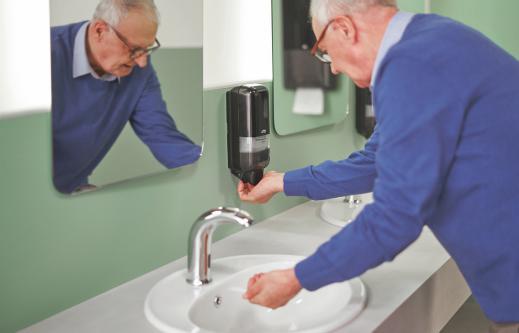
eating and drinking at a venue.
• 10 per cent have told their friends to avoid the location and seven per cent have left a poor online review.
• 18 per cent of people have made a complaint to staff or workplace management about poor washroom experiences.
• 15 per cent worked from home more than they otherwise would, because of poor
October 29-30
ISSA Cleaning & Hygiene Expo Sydney, Australia www.issa.com
November 4-6
Hygienalia Madrid, Spain www.hygienalia.com
November 10-13
ISSA North America Las Vegas, USA www.issa.com
February 18-19 2026
The Manchester Cleaning Show Manchester, UK cleaningshow.co.uk/manchester
April 14-17 2026
Interclean Amsterdam Amsterdam, Netherlands www.intercleanshow.com
October 8 2026
European Cleaning & Hygiene Awards www.echawards.com
washrooms at work, hindering return to office policies.
Tork Insight Survey 2025 was conducted in US, UK, Germany, France, Mexico, Canada, Australia, Spain, Sweden, Netherlands and Poland among 11,500 people from the general public and 1,000 cleaning staff.
To find out more: www. torkglobal.com/gb/en/about/ inclusive-hygiene
November 16-19 2026
ISSA North America Las Vegas, USA www.issa.com
March 16-18 2027
The Cleaning Show London, UK cleaningshow.co.uk/london
May 11-13 2027
ISSA Pulire Milan, Italy www.issapulire.com
November 8-11 2027
ISSA North America Las Vegas, USA www.issa.com
To have your event included in the Events section, contact ECJ via email at: michelle@europeancleaningjournal.com
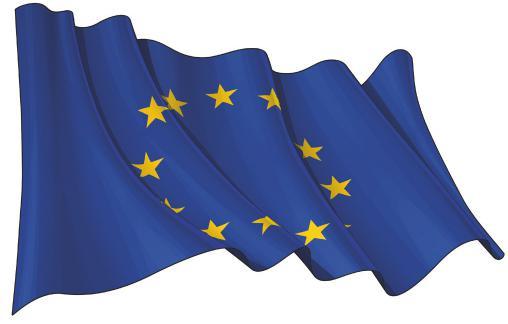
The European Parliament has approved a non-binding owninitiative report on revising the EU public procurement directives, drafted by MEP Piotr Müller (ECR, Poland) - reports EFCI from Brussels.
The report outlines the EU Parliament’s priorities for the legislative overhaul of the public procurement rules, expected to start in the third quarter
of 2026. One of the report’s main messages is that instead of focusing on the cheapest price, public tenders should give more weight to non-price considerations and seek the best price/quality ratio.
The report also asks the Commission to assess ways to favour European companies, especially in strategic sectors, to stimulate demand for
European-made products and technologies and to anchor industrial capacity within the EU. This should, however, be done without resorting to outright protectionism, MEPs say.
MEPs want the Commission to promote small business participation in tender processes and to simplify both the 907 pages of law currently governing public tenders as well as the procurement procedures themselves.
Proposals from Socialists/ Greens to make social and green criteria mandatory failed.
The Parliament’s report has no legal standing but is intended to inform the Commission ahead of a proposal from the EU executive. Commissioner for industry Stéphane Séjourné will publish an impact assessment of the current framework, per his mandate from President von der Leyen.

TRU Global Solutions - the Belgian expert in cleanroom cleaning - has opened a new office in Switzerland. The new branch is based in Basel, a hub of the European pharmaceutical industry.
Founder and CEO Vanessa Morini explained: “Cleanroom cleaning is fundamentally different from conventional cleaning. It’s about more than just wiping down surfaces. Invisible contaminants can lead to costly product recalls, production delays and can pose serious health risks to patients. Our employees are highly-trained specialists who work according to the strictest GMP standards and international guidelines.”
Manuel Schütte, CEO of TRU Switzerland added: “Our clients can now focus fully on their core activities while we ensure a contamination-free production environment.”































































































































































































































































































































































































In the UK, The Kingdom Group has completed the acquisition of Crystalcare Cleaning Services which is based in London and the south east of England.
The business will be rebranded as Kingdom Cleaning London and will be the specialist citybased division of Kingdom Cleaning. Kingdom operates throughout the UK across a diverse range of sectors, has a workforce of over 11,500 and a turnover of £300 million.
The operational management at Crystal will continue in their roles and the general managers will join the Kingdom Cleaning leadership team - reporting to Lucy Lloyd, chief services officer. Over 720 people from the Crystalcare workforce will be transferring.
Terry Barton, CEO of The Kingdom Group said: “Our existing cleaning business and south region is further

strengthened by the addition of Crystal. Together and united, we’re positioned to deliver even greater value and innovative cleaning solutions.”
“We have done this to further support our sustainable, innovative and ethical cleaning services,” added Toby Jerman, CEO of Crystal Cleaning. “With changing work practices, joining Kingdom will help us to further improve our sustainable approach, use of the latest technology and putting our community and teams at the forefront.”
US-based EMCOR Group has entered into a definitive agreement to sell EMCOR UK to international facilities services company OCS Group, based in the UK. EMCOR - a Fortune 500 business - is a leader in mechanical and electrical construction services, industrial and energy infrastructure and building services.
The deal is worth £190 million, equivalent to $255 million at current exchange rates.
”With the sale of EMCOR UK, we are accelerating our ‘local execution, national reach’ strategy to further focus our business across our large, diverse and attractive end markets in the United States, where we continue to see significant opportunity,” said Tony Guzzi, chairman, president and chief executive officer of EMCOR.
“We have a lot of momentum
in the business and intend to use the proceeds from this sale to expand our electrical and mechanical construction and mechanical services businesses, including through disciplined acquisitions, to provide customers with more comprehensive service offerings.”
Rob Legge, chief executive officer of OCS added: “EMCOR UK has built an impressive UK technical services business, with proven expertise in complex and critical environments. We see strong strategic and cultural alignment and look forward to working together through the transition to ensure a smooth and consistent experience for colleagues and customers.”
The transaction is expected to be completed by the end of 2025.

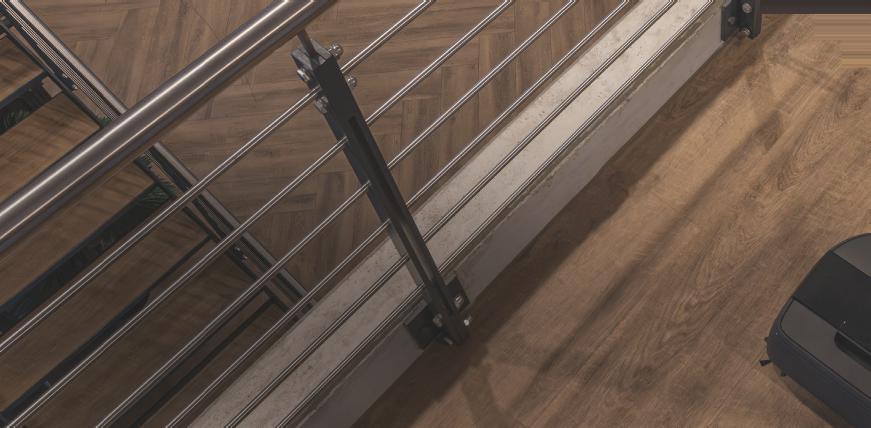




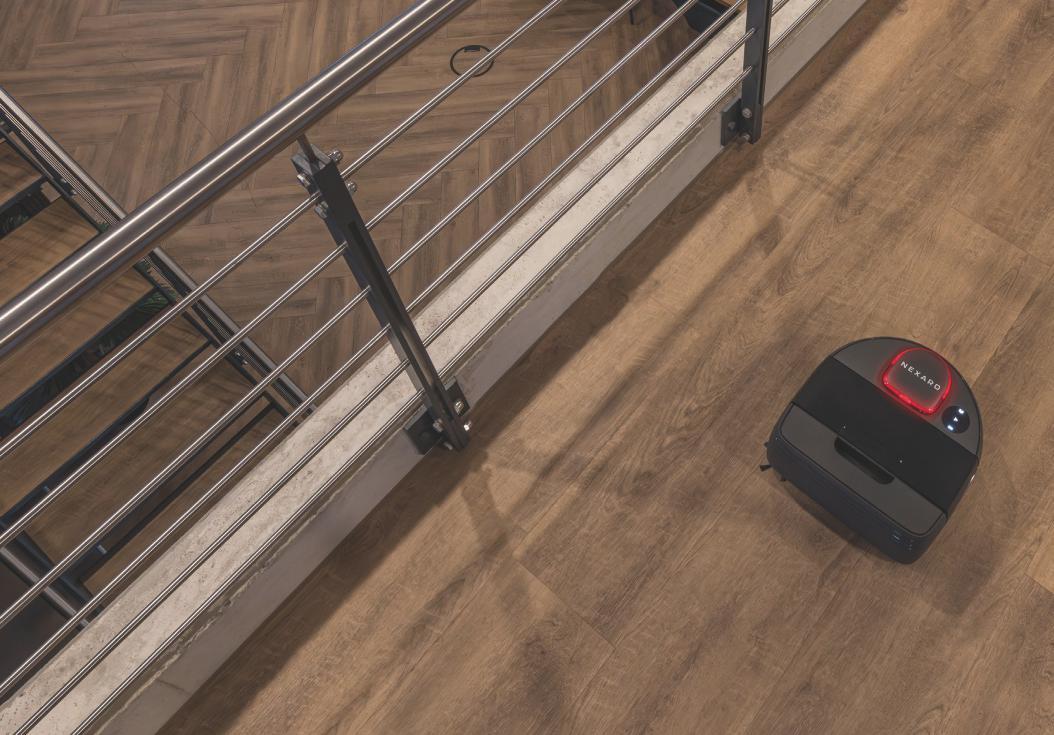
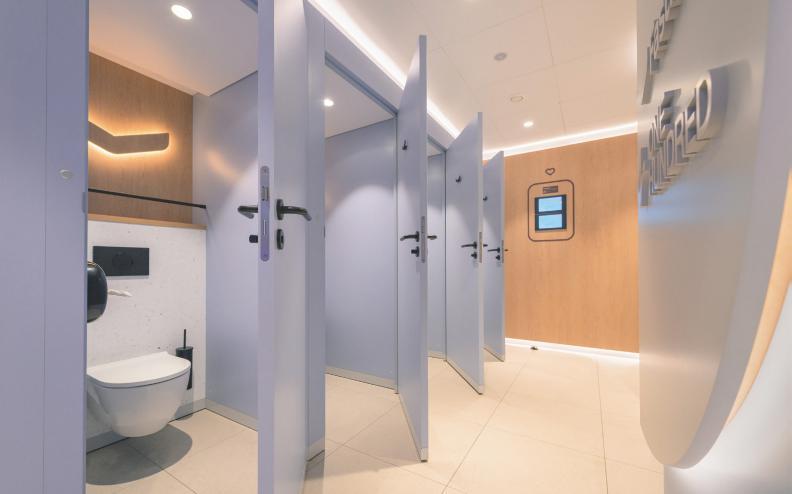
ONE HUNDRED restrooms, the Dutch company re-inventing the public washroom around Europe, has opened its first collab washroom concept with Fastned - a business that owns and operates fast-charging stations for electric cars. This first openings are the two motorway service areas at Gentbrugge North and South in Belgium.
The collab washroom concept is a new proposition developed by ONE HUNDRED restrooms for brands like Fastned that want to integrate the ONE HUNDRED high-end well-
being experience into their own branded environments. The codesigned washrooms enhance the customer experience and reinforce the visual identity of Fastned at the same time.
Go-to stop
“At Fastned, we build fast charging stations for people,” says Luuk Valk, head of retail development & retail operations at Fastned. “Because people on the road need more than just a charged battery: they want good food, drinks, clean restrooms, and a place to relax. Our goal is to become the go-to stop for
everyone travelling, whether you’re driving an EV or not.”
“That’s why we partnered with ONE HUNDRED restrooms. Their innovative and hygienic facilities perfectly align with our ambition to set a new benchmark along the road. Together, we offer a complete experience where quality, comfort and hospitality come first.”
In collaboration with design studio Desarc, ONE HUNDRED created a tailor-made concept that blends its distinctive wellbeing design with Fastned’s identity. Signature features
include fresh blue/wood colours, custom Fastned lighting and coat hooks shaped like the Fastned logo.
The new concept includes innovative modules such as a mini vending with fresh-up items for travellers, a digital face scan developed with Belgian health tech company IntelliProve2 offering insights into stress levels and overall well-being, ONE HUNDRED’s smart urinal that monitors hydration, as well as a shower, baby changing station and accessible toilet facilities.
Shared missions
On entering the restrooms through the turnstile, visitors receive a voucher worth €0.50 to use on their next food or beverage purchase in the Fastned shop.
“The collab concept represents a powerful blend of our shared missions: to enhance wellbeing and support a smooth, stress-free journey,” says Mariëlle Romeijn, co-founder and chief brand officer of ONE HUNDRED restrooms. “With the new Fastned restrooms, we are proving that a washroom stop can be a moment of care, innovation and new energy.”
Fastned has 24 more sites in Belgium under development. The partnership will also extend into charging stations in the Netherlands.
In the UK, the winners of the annual BICSc awards were announced during a gala dinner. Group managing director Neil Spencer-Cook said: “The BICSc Awards 2025 were an outstanding success. It was fantastic to be able to celebrate the very best in the cleaning industry and honour the incredible individuals and teams who make a real difference every day.
“These awards are about recognising excellence but more than that, they’re about celebrating the people who make our industry what it is, the
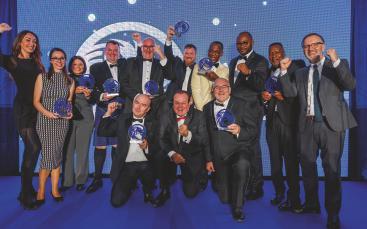
ones who go above and beyond, who innovate and who inspire.”
Spencer-Cook was himself the recipient of a trophy when he was announced as the winner of The David Bellamy Award for his decade of service.
The winners are:
• The David Bellamy AwardNeil Spencer-Cook
• The Chairman’s Award - Greig Cave
• The Eric Hill Award - Darrin
McCartney
• The BICSc International Award - Whitespot Facilities Management
• Innovation Award - Whitespot
Facilities Management
• Environmental (ESG) AwardJulius Rutherfoord & Co
• Corporate Member of the Year
- Deeland t/a Service Master
• Accredited Training Member of the Year - Clarion Housing
• Assessor of the Year - Steven Goldie - HMP Addiewell
• Accredited Trainer of the Year - Amaniampong Atakora, Goldsmiths University of London
• Cleaning Operative of the Year - Barrington Spencer, Bidvest Noonan
• Outstanding Candidate of the Year - Joshua Morel, Engie Solutions KSA
• Lifetime Achievement Award - Johanna Galindo, King’s College London







Three values ����a�� have ��e����e�� us ����r ���� ��ears a���� ��r��ve us ����
c����������ue crea������g pr����ess������al h��g��e��e s��lu��������s ����a�� ����sp��re
c��������e��ce a���� make a ����ffere��ce ���� ever�� space.


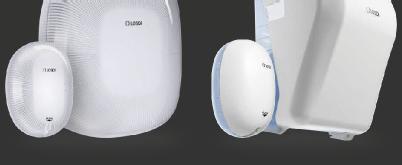
We wait for you at:


In the UK, the British Institute of Cleaning Science (BICSc) and the Cleaning & Support Services Association (CSSA) have together successfully completed a project exploring the future of cleaning. The aim was to offer insight through independent trials and scientific results.
The project aimed to:
• Determine the productivity of different types of current machine ranges.
• Provide clarity on the changes to productivity brought about by robotics.
• Evidence the effect on the standard of cleaning achieved from the usage of these machines and chemicals.
• Determine whether the use of this equipment or chemical range made changes to air quality and pathogen count.
Suppliers were approached to assist in trialling different types
Lithuania-based paper producer Grigeo Group is expanding into Western Europe with its acquisition of Huchtemeier Papier in Germany. The deal, it says, opens up the group’s largest European market and new expansion opportunities in Germany and the neighbouring countries. Based in Dortmund, Huchtemeier Papier is a family-owned business with over 125 years of tradition. Its products are used in the cleaning industry, hotel and catering, industry, retail and the medical sector. With sales offices in Germany, Austria, Poland, and Turkey, it employs 47 people.
Tomas Jozonis, CEO of Grigeo Group, commented: “By acquiring Huchtemeier Papier,
we are not only acquiring a company with deep traditions and a strong name in the German paper market, but also invaluable experience and partnerships built up over more than a century.
Strategic move
“This is a strategic move that opens up the largest European market for us - Germany, as well as Austria, where Huchtemeier Papier has a strong position. For our hygiene paper segment, this step will allow us to expand our logistics chain and ensure long-term partnerships with local customers.”
Huchtemeier Papier will continue to operate as an independent business unit, as well as retaining its name and management.
of equipment, chemicals and processes. Numatic, Birkin, Killis, Diversey, Kärcher and Orion Eco took part.
The trials took place at the University of Surrey, with each manufacturer given six weeks to establish their equipment and/ or chemicals. The BICSc Cleaning and Hygiene Audit App was used to assess changes in cleanliness.
Several challenges impacted the results, including
management changes, staff engagement and external consultant recommendations. The cleaning inspection results were mixed, with no clear correlation from the starting point to the completion results. However, valuable insights were gained say BICSc and CSSA, such as the importance of engaging operatives in the process and the need for effective change management.
“The trial has shown us that success lies not just in product performance but in the readiness of people and processes to adopt it,” said Paul Ashton, CSSA chairman.
“Management of change is key to the success of the process. Where staff are not engaged in the process, the installation of new equipment or processes is doomed to failure,” added Denise Hanson, commercial director at BICSc.
Neil Spencer-Cook, group MD at BICSc concluded: “How we manage change needs to be the biggest consideration, whether it is technological, chemical, machinery, or even providing training. Without clear guidance, leadership and ongoing support, change will not be effective.”
A retail worker was dismissed by a Dublin fashion retailer after complaining to the Health and Safety Authority about the lack of a washroom in the workplace.
The Yaya boutique has been ordered to pay €7,500 in compensation to Fiona Bird following a Workplace Relations Commission review.
When Bird started work at Yaya she said there were some inevitable start-up problems. But the biggest issue was the lack of a staff washroom, which also meant there was no onsite hand washing facility.
The employer made arrangements with the coffee shop next door to allow staff members to use their customers’ toilets. Bird said this was not always convenient.
When this situation went on
for several months, Bird reported the issue to the HSA. She later discovered the Authority had contacted her employer about the matter.
She was told to leave five months after starting work at the store. She claimed to be shocked at her dismissal since no probationary period had been mentioned and there had been no suggestion that her employers were unhappy with her work.
The employer said Bird was being dismissed for poor performance because her sales were not as good as those of her colleagues. But adjudicator Penelope McGrath ruled this out as a reason for Bird’s dismissal, while Bird herself said she believed she was being penalised for raising an issue with the HSA.
In


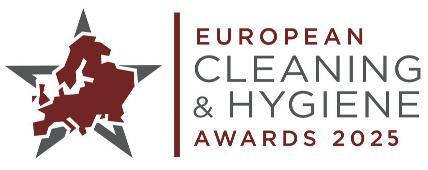
The winners of the European Cleaning & Hygiene Awards 2025 were revealed in early October during a glittering gala dinner at the National Museum of Scotland in Edinburgh.
Over 350 cleaning industry professionals from throughout Europe came together to celebrate its achievements, innovation and dedication over the past year.
With 61 finalists across 11 categories, this was another record-breaking year for entries.
The 2025 winners are:
• Digital TransformationVebego
• Investment in Training & People Development - NIC Services Group
• Excellence in Client-Contractor Partnerships - CleanEvent Services and Tottenham Hotspur FC
• Sustainability - Best Practice (Manufacturing) - Bona
• Sustainability - Best Practice (Service Provider) - Asito, CSU & GOM
• Commitment to Diversity in the Workforce - MTB Cleaning Service
• Best Initiative Raising the Profile of the Cleaning Sector - Breedweer
• Technological Innovation of the Year - Principle Cleaning Services and British Land Drone Window Cleaning
• Leader of the Year - Avril McCarthy, Derrycourt Cleaning Specialists
• Rising Star of the Year - Corey Watts, CleanEvent Services
• Best Company to Work ForJPC by Samsic
ECJ editor and founder of the awards Michelle Marshall
said: ”Each year, we are reminded just how dynamic and forward-thinking our industry has become - and 2025 has been no exception. The innovation, dedication, and commitment demonstrated in this year’s entries show that the professional cleaning and hygiene sector is not only keeping pace with change but leading it.
Celebration
“Bringing everyone together in Edinburgh to celebrate these achievements has been truly inspiring. From groundbreaking technologies to new approaches driving sustainability and raising standards, the progress on display was remarkable. Every finalist should feel proud of the impact they’re making, and we’re delighted to recognise our 11 outstanding winners who are shaping the future of our industry. Congratulations to them all.”
Judges include Michelle Marshall, Lynn Webster and Frank Veneman.
ISSA Pulire was the headline sponsor for the event. Other sponsors included BICSc; Ceris Burns International; Greenspeed; Interclean; i-team; Jangro; Kärcher; Nexaro; The Cleaning Show; Vectair; Tork, an Essity brand; Lucart Professional; CMS Berlin; Diversey, a Solenis company; and Grosvenor Services.
Media partners are GSA in Italy and Services in France.
The European Cleaning & Hygiene Awards 2026 will open for entries in January. Visit www.echawards.com for more information.
The host city for the 2026 European Cleaning & Hygiene Awards will be announced in November!
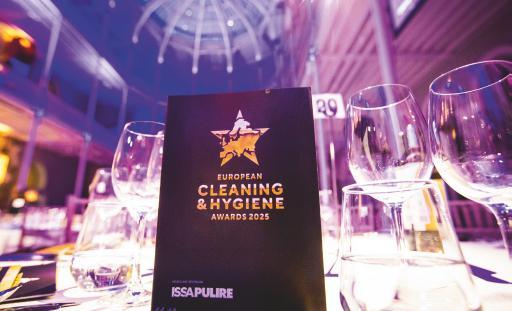
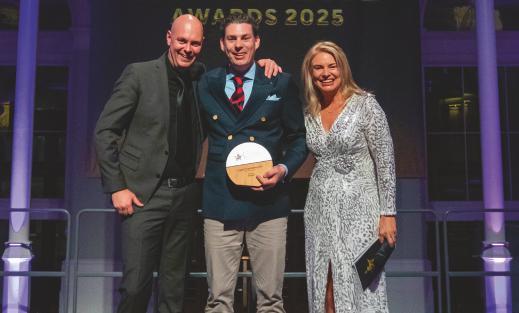
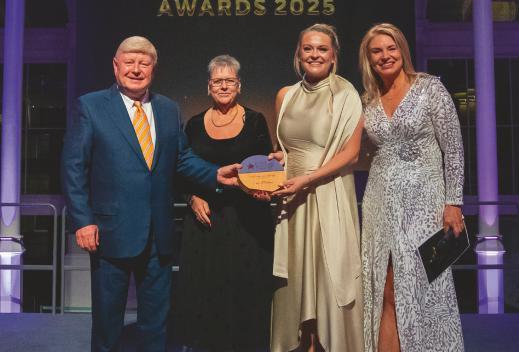
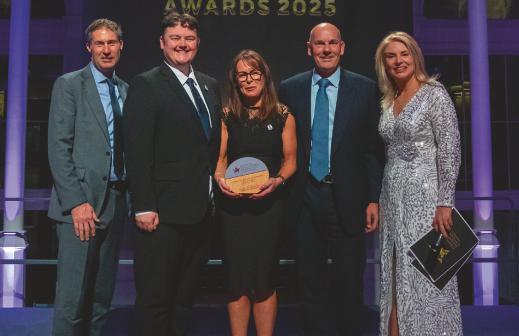
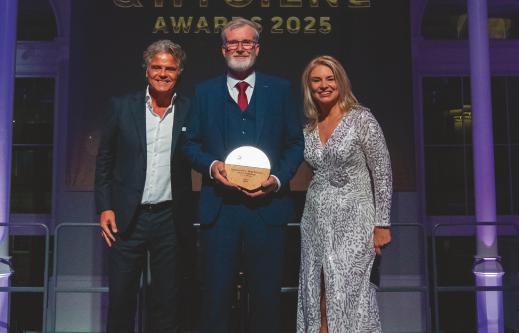
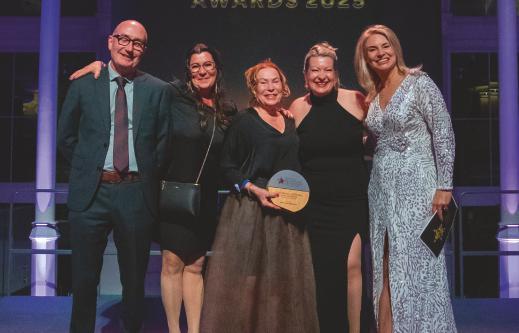
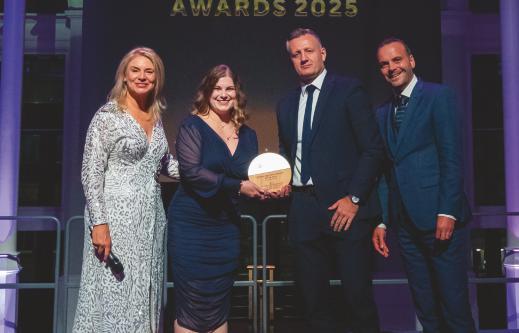
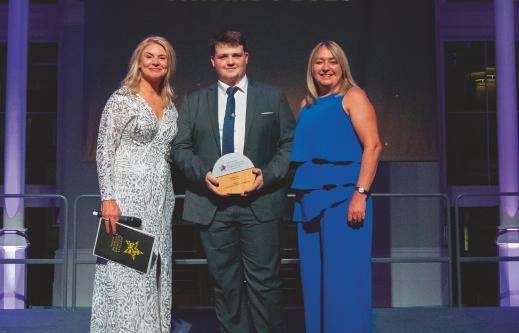
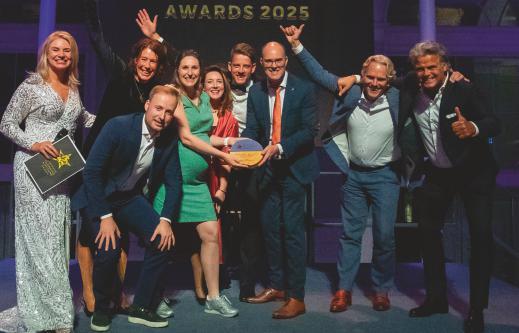
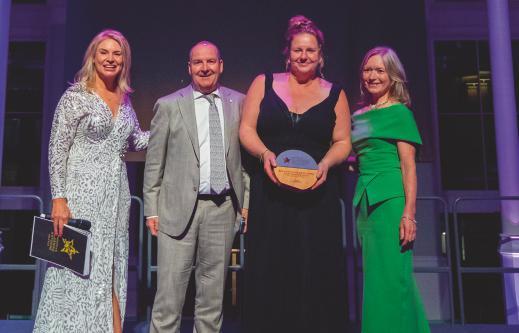
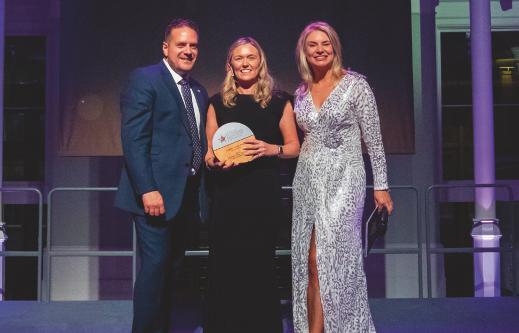

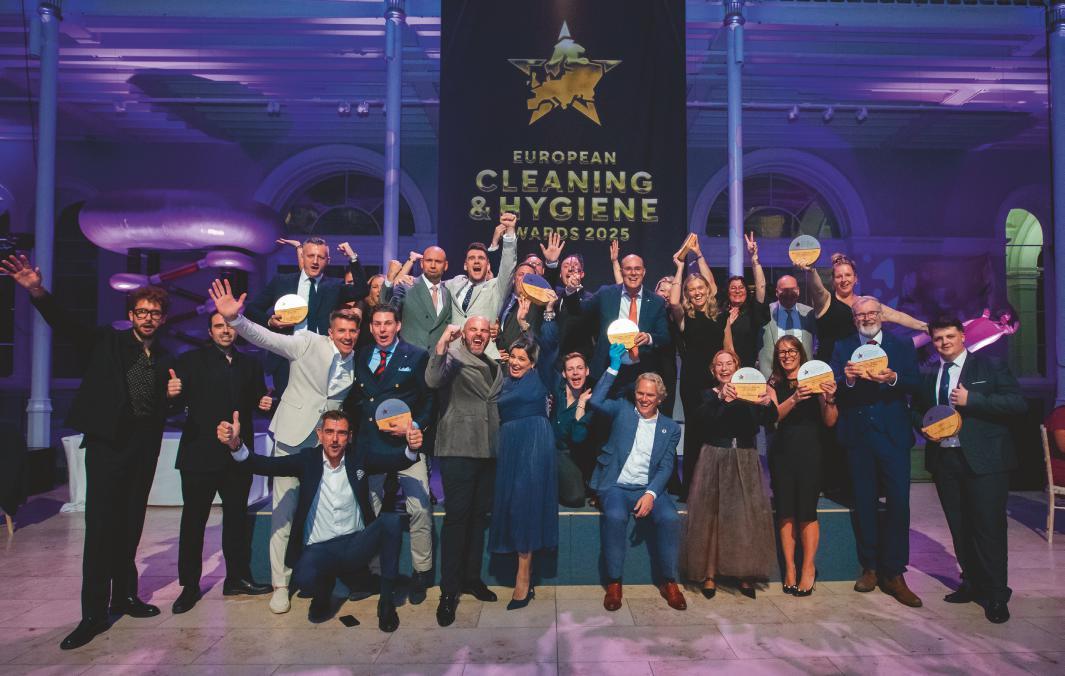
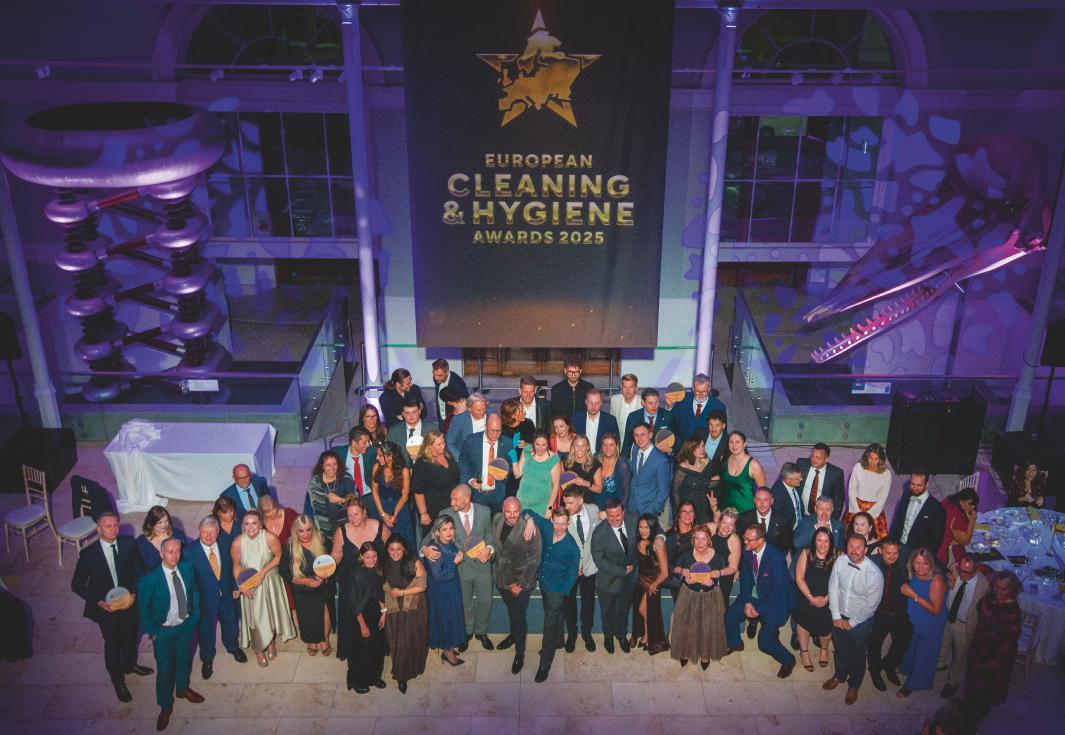

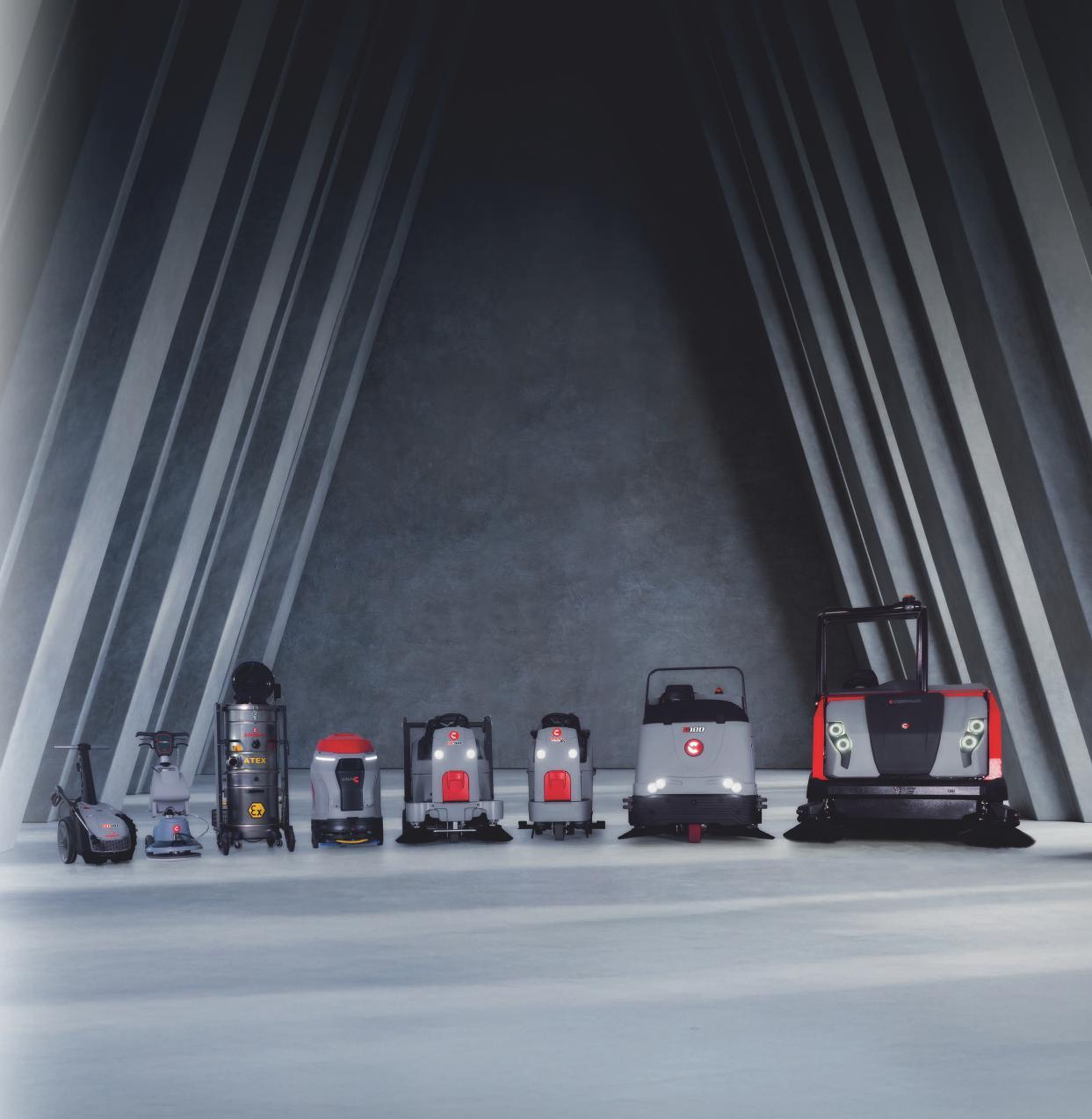


EFCI in Brussels is calling for the creation of a new central vetting system to make crossborder recruitment simpler and faster, while ensuring trust, safety and fairness. It says free movement is a cornerstone of the EU’s single market.
As the European Cleaning and Facility Services Industry (EFCI), the recognised employers’ organisation and Social Partner for the cleaning industry sector, we call for the creation of a Central EU Police Vetting System to simplify and accelerate cross-border recruitment while ensuring trust, safety, and fairness.
Labour mobility is a cornerstone of the EU’s single market, enabling workers to move freely across Member States and supporting economic integration. However, the practical implementation of the legal framework, including rules on the free movement of workers, the posting of workers and social security coordination, faces persistent challenges that undermine efficiency and legal certainty.
Key challenges of implementation
• Fragmented procedures across member states: national authorities maintain separate systems for background checks (eg, criminal records, police vetting), resulting in delays, varying quality standards, and limited interoperability.
• Administrative complexity

in cross-border recruitment: employers seeking to hire workers from other member states face lengthy and complex processes to verify records, particularly for sensitive professions such as security, childcare, and healthcare.
• Redundant vetting processes: mobile workers are often subject to repeated background checks when moving between employers (within the same country) and jurisdictions, creating unnecessary administrative burden for both workers and employers.
• Data protection and privacy concerns: divergent interpretations of EU data protection rules (eg GDPR) lead to uncertainty for authorities and
employers, particularly when exchanging personal information for vetting purposes.
EFCI’s proposal
These challenges risk slowing down labour mobility, creating barriers for employers in critical sectors, and eroding confidence in the fairness and consistency of the single market’s labour mobility framework. EFCI therefore calls for creation of a Central EU Police Vetting System, a single, EU-wide process that:
• Simplifies and accelerates hiring by replacing multiple national checks with one mutually recognised vetting procedure, accessible via a single online portal.
• Individual applications
to enable employees to vet themselves and provide their vetting number to employers. Registered employers could access the EU Policy Vetting Cert through the secure portal.
• Enhances trust and safety through accurate, secure, and fast verification, supporting both worker mobility and public protection.
By creating a single, digitally driven vetting process, the EU could reduce administrative burdens, improve hiring speed in critical sectors, strengthen cross-border trust, and protect both worker rights and public safety - fully realising the potential of the single market for labour mobility.
efci.eu
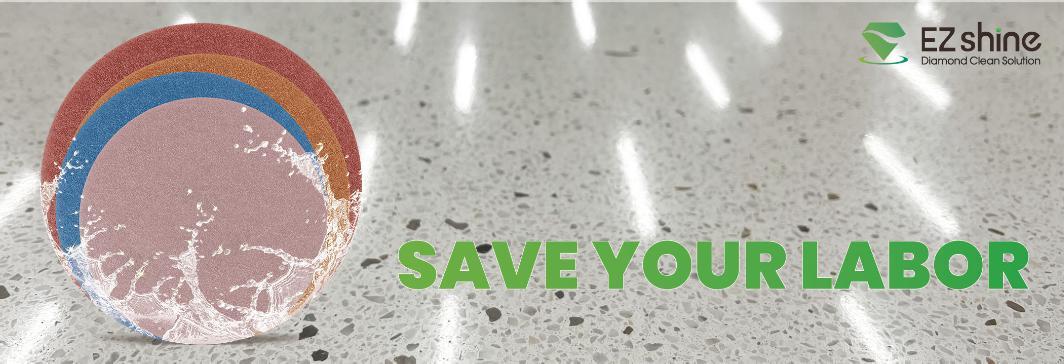
Lynn Webster in the UK says it’s time for those who work in the sector to take pride in what they do.
Cleaning operatives are so often thought of as the invisible labour force: unseen, overlooked and undervalued only until something negative occurs or it all goes wrong.
Cleaning teams can be considered expendable, purely a functional necessity without any thought for the people involved - leaving those who work in the cleaning industry feeling overlooked despite their essential worker status and importance.
The various cleaning industry associations are becoming more publicly aware of the need for RESPECT.
The narrative is clearly changing, recognising the and appreciating the members of our cleaning teams as no longer “just a cleaner” - a phrase that diminishes a person’s worth. We are now replacing that with our own positive messages and behaviours.
There is tremendous work being done.
For example the Clean Start initiative from the Cleaning and Support Services Association (CSSA). A finalist in the recent European Cleaning and Hygiene Awards, this is a campaign to change the way young people perceive cleaning and to encourage them to consider the cleaning industry as a worthwhile career move with the many facets and roles it has to offer.
Breaking the stereotypical vision of cleaning and promoting the opportunities available.
Challenging perceptions
Furthermore, there is the focus, the voice, from the British Cleaning Council on actively challenging the perception of cleaning as low skilled or in fact as not being skilled at all. It continues its work to gain official recognition from government and the public for the vital role cleaning plays in society.
Most recently there has been significant collaboration established between the Worshipful Company of Environmental Cleaners and the British Institute of Cleaning Science (BICSc). Both
organisations founded by Eric Hill are coming together in a new and exciting collaboration.
With the growing success of the Chartered Practitioner status provided through Royal charter status of the Livery, and with well over 50 people now on the register, BICSc is supporting those who are on their chartership journey. The opportunity to be recognised for your achievements is open to all those who meet the criteria of the five pillars: General Knowledge, Skills, Communication, Leadership and Professional Commitment.
Visit: wc-ec.com/charteredpractitioners to find out more.
Having considered these five pillars required for entry candidates are now able to fill gaps in their knowledge, hone their skills and further develop in their preparation for submission with training, mentoring and support in the process through defined links on the BICSc web page.
All these are great initiatives but the cleaning industry needs to take ownership of its future. There is certainly more to be done by the sector itself.
So perhaps a “call to arms” for the self-respect we should each demonstrate. Have respect for ourselves. Value ourselves. Take pride in our roles and in turn allow society to appreciate our industry. So, time to take those vital steps to recognise ourselves as a visible, professional and highly skilled industry we are proud to be a part of.
From Germany, Katja Scholz brings news of latest trends being discussed at the industry’s exhibition.
It was that time of year again: CMS, one of the most important German, European and indeed international trade fairs for cleaning and hygiene, took place at the end of September in Berlin. The Federal Association of Contract Cleaners (BIV), was again this year one of the sponsoring associations supporting the Berlin Messe as organiser and helping the event to get off the ground.
“If people say after the fair that they enjoyed it and have taken away from it some innovations, ideas and suggestions - then we’ve done our job”. With these words, federal guild master Thomas Dietrich summed up the significance of CMS Berlin in a nutshell. And this proved to be so: the fair did indeed show the direction in which the cleaning sector is moving - and which subjects are going to dominate the market in the coming years. The top trends are obvious: artificial intelligence, digitalisation and sustainability.
Complex challenges
The expert forums were particularly well attended, said Dietrich during the fair, and interest in new product innovations was high. We find ourselves in Germany and central Europe in a situation where new technologies, robotics and AI are ready to launch on the market while at the same time tough requirements are set for sustainability and efficiency and for environmental standards for packaging, cleaning agents, etc. This presents complex problems for manufacturers and service providers. It became very clear at the fair: sustainability is no longer an optional extra, it’s a must.
The high salary and associated costs in Germany make automation and digitalisation attractive but this is counteracted by the lack of qualified staff encountered every day which affects all levels. As so often happens, the solution lies somewhere in the middle, since qualified staff are needed both for and in spite of
high-tech.
Furthermore, the subject of efficiency is particularly controversial at the moment with rising energy prices, high operating costs and the necessary investment in new technologies. While large firms are able to invest in automation, this is more of a problem for smaller companies. They are battling with scarce capacity and are therefore often reluctant to make changes - whether for reasons of cost or lack of resources - factors which are not independent of political discussions and decisions.
Shake-up needed
In the special trade fair podcast from the new CMS Podcast Cube in Hall 5.2, Thomas Dietrich rates the new government’s first few months as disappointing from the contract cleaning sector’s point of view. “I hope there will be a shake-up and a move to actually tackle the necessary reforms free from any ideology and to act like a pragmatic alliance.”
The key requirement for the BIV is further bold reforms in the field of social insurance, such as pensions: “People are living longer and expect to draw their pensions for longer but they don’t want to pay more and don’t want to work any longer – this is the circle that has to be squared,” added Thomas Dietrich, wishing therefore the Federal government would “radiate confidence by action and not by arguing things away”.
A new record was set this year for the fair with the further expansion of exhibition space: more than 34,000 square metres of indoor and outdoor space were provided and over 440 exhibitors were represented from 29 countries, with growing international participation. Exhibitors from abroad came mainly from Europe and China, with new arrivals this year from the United Arab Emirates, North Macedonia, Hong Kong and Norway.
Christian Bouzols in France tells us about a community programme to combat litter.

In France, the equivalent of 200 million bin bags are still discarded in the environment every year.
Faced with this alarming reality, World Cleanup Day –France organised a major mobilisation bringing together citizens, businesses, associations, schools and local communities from during a week in September, as part of the world’s largest civic and environmental action. While this initiative transcends borders, it is worth noting that in 2024, more than 140,000 French people donned gloves and collected rubbish from public roads alongside 23 million volunteers in 190 countries and territories. This was an unprecedented mobilisation... but it is still not enough to curb the proliferation of litter.
A movement for everyone World Cleanup Day is not just for large organisations: it belongs to everyone, and thanks to local initiatives across the country, every citizen was able to join a clean-up near their home during the third week of September. Businesses, local communities and associations also mobilised their teams around the project. As for schools, many of them took advantage of this week to raise awareness among the younger generation, who are the real agents of change.
And there is much work to be done: every year, nearly one million tonnes of litter are abandoned in France. Plastics, cigarette butts, cans, tyres, bulky items... All these pollutants are left along public roads or in illegal dumps in rural areas. And while picking up litter is not a solution in itself – local authorities are increasingly
cracking down on offenders – it is the most active and probably the most effective way of raising awareness of the need to reduce our waste at source.
According to the initial figures available, 125,000 people took part in Operation 2025, which ended on September 21. Four thousand ‘clean-up events’ were recorded. However, the results are still provisional at this stage and will be finalised in the coming weeks.
Founded in Estonia in 2008, the Let’s Do It movement has set itself the mission of combating litter through citizen clean-up initiatives. Since 2018, participating countries have been coordinating their actions to take part in World Cleanup Day, the largest citizen mobilisation on a global scale. In 2022, World Cleanup Day attracted 15 million participants in 190 countries and territories.
In 2023, participation reached record levels with 19.1 million participants worldwide. This year, World Cleanup Day was added to the UN calendar of international days and weeks.
World Cleanup Day in France
Created in 2017, the World Cleanup Day - France association is committed to ensuring that cleanup operations are a catalyst for behavioural change while raising awareness among individuals to adopt more responsible practices in terms of production, consumption and waste management. Driven by unifying, educational, inclusive and friendly values, the movement aims above all to raise collective awareness, beyond the million tonnes of waste collected each year.
As Anna Garbagna, ECJ’s correspondent in Italy explains, the new generation of cleaning machines combine efficiency, ergonomics and sustainability.
In Italy, as everywhere, the professional cleaning sector is undergoing a phase of significant technological renewal. Machinery manufacturers are investing in R&D to respond to new market demands: greater efficiency, reduced energy consumption, ergonomics for operators and attention to environmental impact. The result is a new generation of equipment that is changing the way professional cleaning is conceived.
Optimisation of working times and reduction of operating costs: these are the two key features. Thanks to more efficient motors and electronic control systems, energy and water consumption is reduced, ensuring a high standard of hygiene: modern floor scrubbers and sweepers adapt to different surfaces and dirt conditions, working faster and with fewer passes. Optimising consumption is not only an economic advantage for businesses, but also contributes to the sustainability objectives increasingly required by European regulations and end customers.
Manoeuvrable solutions
Another strong point is ergonomics: operators spend many hours using heavy or noisy equipment, with the risk of fatigue and musculoskeletal disorders.
The answer has been lighter, more manoeuvrable solutions with intuitive controls. Adjustable seats, digital control panels and driver assistance systems reduce physical effort and improve safety. Noise reduction is also key: quieter machines allow operation in sensitive environments such as hospitals, schools, hotels or offices without disturbing daily activities.
The new generation of machines is not only more efficient, but also smarter. The introduction of sensors and monitoring systems allows
real-time data to be collected on usage, consumption and maintenance conditions.
Some models offer IoT connectivity, allowing companies to plan interventions predictively and manage machinery remotely. This reduces machine downtime, improves operational continuity and ensures consistent cleaning standards.
Robotics is another rapidly growing frontier: autonomous robots for cleaning large surfaces are becoming increasingly common in logistics warehouses, shopping centres and airports.
ESG regulations
Finally, sustainability is now an essential element. New commercial cleaning machines use recyclable materials, systems that reduce the use of chemical detergents and technologies that minimise waste: an approach in line with ESG regulations and the growing awareness of businesses towards environmental impact.
For many companies, choosing suppliers who invest in green solutions represents a competitive advantage, as well as an ethical commitment: new-generation machines are not just an operational tool, but an integral part of corporate sustainability strategies.
The industrial cleaning market has always been moving towards innovation. The ‘new’ machines represent a strategic investment: they improve efficiency, protect the health of operators, reduce operating costs and contribute to concrete environmental objectives. For Italian companies, adopting these solutions means not only keeping up with the times, but also anticipating future market needs. In a competitive and regulated environment, technological evolution is not optional: it is the key to building a more modern, safer and more sustainable sector.
A municipal budget deal in Denmark favours cleaning at schools, nurseries and kindergartens. It pays according to American researcher. This from Lotte Printz in Denmark.
School washrooms have often been in the spotlight. But rarely for anything good. Usually, cleaning is not a priority for local government politicians when juggling the budgets. Therefore, this September’s budget deal for the Municipality of Copenhagen may come as a bit of a surprise. Allocating DKK 80 million (around €11 million) to school cleaning over a four-year period until 2030, this deal hopefully enables kids at schools, nurseries and kindergartens in the Danish capital city to enjoy cleaner washroom facilities. Although, the main amount is earmarked for refurbishments, DKK 7.3 million is allocated to educational initiatives, hygiene interventions and extra cleaning at the Copenhagen schools in 2026 as well as DKK 5 million annually in 2027-2029. Nurseries and kindergartens can look forward to DKK 4.5 million annually for these purposes. Good news for all
This is not only good news for the kids and from a cleaning and FM sector perspective, but can prove highly beneficial both health wise and in the monetary sense for these educational institutions where high-touch surfaces, shared equipment and washrooms serve as common culprits in the transmission of illness.
Recent studies in American elementary schools, reported by James Kim, PhD and senior vice president of American Cleaning Institute (ACI), on cleanlink. com, show that targeted surface disinfection protocols reduced
student absenteeism due to illness by 50 per cent. Cleaning also had a significant positive impact on staff absence, which may otherwise ‘require costly substitute coverage and disrupt continuity in instruction’ as Kim points out. On top of that, high hygiene standards improved staff morale.
Enhanced focus on evidencebased cleaning is key to Kim in this respect as it goes beyond routine schedules and visual inspection. It relies on measurable outcomes, data-backed procedures and validated products and technologies. ACI’s joint initiative with the Centers for Disease Control and Prevention, called ‘Healthy Schools, Healthy People’, offers practical, evidence-based resources as well as highlighting collective action. In his piece on cleanlink. com, Kim also addresses the cleaning and FM sector that is ‘in a unique position to drive transformation in school facilities’:
“By staying informed on research, embracing innovation and advocating for evidencebased standards, professional cleaning executives can shape healthier, safer learning environments (…) an evidence-based approach is not just best practice, it is a competitive advantage,” he says.
In conclusion, there’s no doubt that cleaning professionals can be essential partners in public health and keep the importance of spotless schools in the spotlight. However, municipal willingness and funding are prerequisites for succeeding.

John Griep at VSR in the Netherlands tells us about a system that standardises sector terminology.
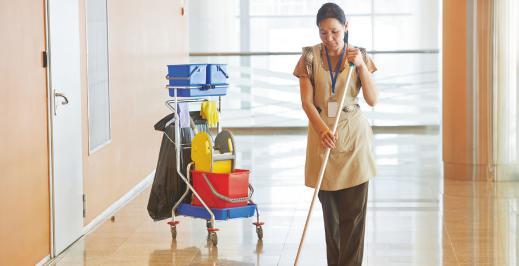
Standardisation of terminology is a quietly powerful lever for improving safety, efficiency and commercial clarity in any technical service sector. In the cleaning industry the Standaard Informatie Systeem-Terminologie (SIS-T) performs that role: an alphabetical, maintained list of cleaningindustry terms with agreed descriptions so that stakeholders - clients, contractors, facility managers and auditors - use the same words to describe the same things.
A practical case
Before the 2025 refresh, Dutch terms like ‘dagelijks onderhoud (daily maintenance) and ‘dagelijks reinigen’ (daily cleaning) were often used interchangeably in tenders and work programmes, yet interpreted differently in scope and frequency. The SIS-T now explicitly equates these terms and anchors them to a measurable parameter; minimum once per week, which improves comparability across offers and contracts.
When linked to VSR-KMS inspections, the defined scope becomes auditable rather than a matter of interpretation. In regulated environments (eg, food production), pairing SIS-T terminology with VSR practice guidelines/food audits supports consistent verification against agreed methods and acceptance criteria. Embedding SIS-T references in tender texts and cleaning programmes therefore turns vague labels into enforceable, auditable specifications. From terminology to measurable practice
SIS-T provides the common vocabulary but its real value emerges only when those terms are linked to practical instruments. VSR practice guidelines require that terminology be translated into work instructions and quality criteria, while the VSR Quality Measurement System (VSR-KMS) offers standardised methods for audits. In addition, verification techniques such as ATP or UV testing are recommended to objectively assess cleaning outcomes. In this way, terminology becomes not just consistent but also verifiable in practice.
Recent update: SIS-T (2025)
SIS-T is actively maintained by sector organisations and saw its most recent update in 2025. The refreshes keep the vocabulary aligned with evolving practice and ensure procurement documents, operational work programmes and training materials rely on precise wording that prevents misinterpretation.
The renewed SIS-T list is publicly accessible via an alphabetical search function on the VSR website and is intended for everyone involved in the sector. Whether working in execution, planning, quality control or communications, professionals can use SIS-T as a single reference point: a reliable basis for consistent, professional language that supports clearer procurement, safer operations and verifiable audits. Adopted across documents and systems, SIS-T becomes less a glossary and more an enabling infrastructure for evidence-based, transparent cleaning practice.
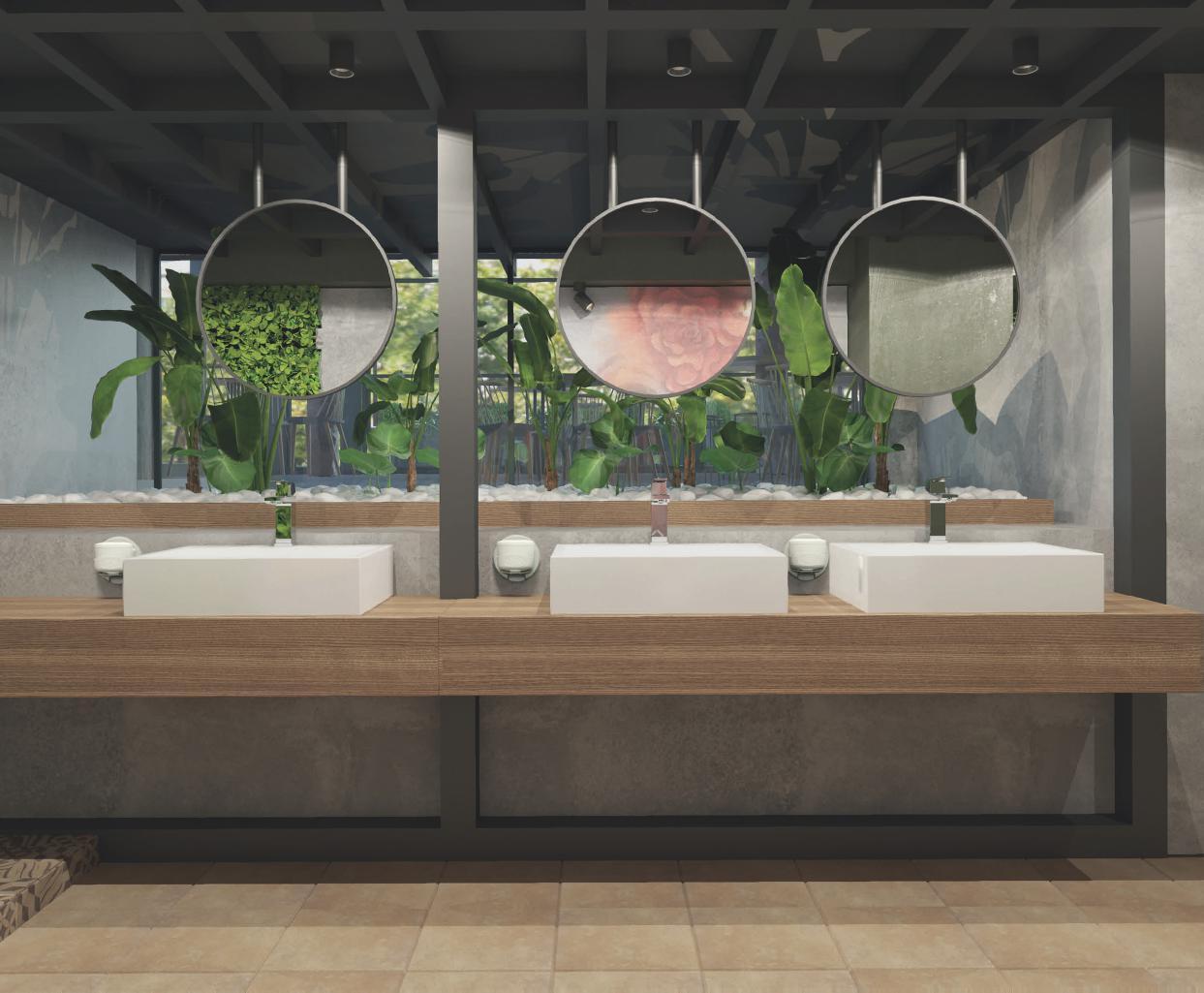

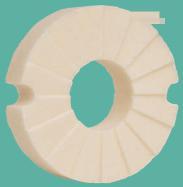
• Stylish dispenser & hand wash refill with a wow factor
• Solid hand wash bar made from plant-based, natural ingredients
• Finely ground flakes provide an instant rich lather


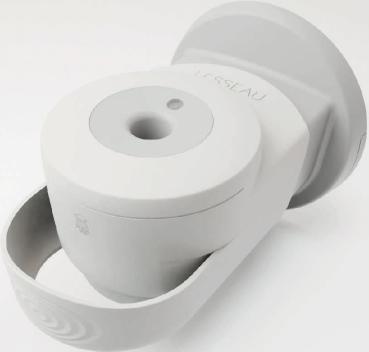




• 12kg Co2 reduction per dispenser p.a. vs liquid soap
• Zero plastic packaging
• Zero plastic waste
• Up to 95% less water than liquid soaps


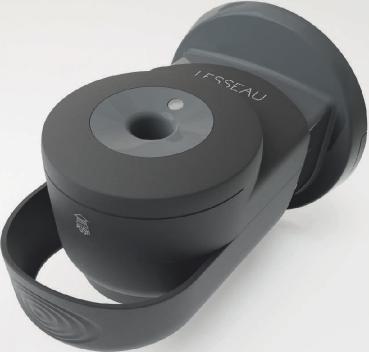



• Reduced waste
• Less storage needed
• Never-empty indicator
• Stackable refills
• Unique mechanism ensures every gram is used

Diversey are taking last year’s award-winning concept further with their latest release.
Diversey, a Solenis Company, is on a mission to drive the real innovations need
One of their key areas of focus is sustainable hand hygiene. With an estimated 400,000 tons of liquid hand wash used every year in public washrooms, emitting approximately 1 85 tons of CO₂e per ton, it was clear a better solution was needed.
Last year, Solenis, in partnership with LESSEAU, launched the award-winning innovation: the LESSEAU® No-Touch Dispenser and solid wash bar, Mille Fleur, which claimed the Overall Winner of the Amsterdam Innovation Award 2024 and won the Sustainability & Environment category.
This year, LESSEAU® enters a new chapter in sustainable dispensing, building on the success of the no-touch system and expanding the range with the new LESSEAU® Manual Dispenser and two ECOCERT COSMOS Natural certified hand wash bars, a system that offers even greater sustainability credentials than its automated predecessor, highlighting Solenis’ commitment to transforming hygiene into a force for good.
With a sleek, push-activated design, the LESSEAU manual hand wash dispenser grinds solid hand wash bars into a fine powder that instantly transforms into a rich, creamy lather. The dispenser holds up to three bars at once, delivering 1,800 doses and featuring a “never-empty” refill indicator to ensure uninterrupted service Crafted from robust materials built for endurance, the dispenser is compact, lockable, and designed to fit seamlessly into even the smallest washrooms. It’s a solution that simplifies operations while helping businesses meet their Environmental, Social, and Governance (ESG) goals, cutting CO₂ emissions, transport costs, and product waste The hand wash range now offers three distinctive bars with PureSense and NaturFresh, joining the already popular Mille
Fleur.
• PureSense is a fragrance-free, dermatologically tested bar designed for sensitive skin. Certified by ECOCERT
COSMOS Natural, with Green Seal certification in progress, it’s the cleanest and most sustainable LESSEAU® bar yet, 100% vegan and microplastics-free.
• NaturFresh offers a soft fragrance derived from natural essential oils like linalool and vanillin. Approved by ECOCERT
COSMOS Natural, it combines indulgence with eco-conscious care, enriched with olive oil and shea butter.
• Mille Fleur, the original bar, remains a favourite for its vibrant floral scent and skin-loving ingredients. With notes of jasmine, lavender, basil, and geranium, it delivers a sensory experience that’s both luxurious and sustainable
Each bar is compatible with both LESSEAU® dispensers and delivers up to 600 activations The bars’ solid nature means they can be packaged for transit in cardboard, eliminating the plastic waste created by liquid solutions. And because the bars can be topped up, there is no longer a decision to make on when to change the bottle, which with liquid systems often leads to product being thrown away as sites try to avoid dispensers running empty between housekeeping shifts.
What is most impressive about the system, however, is just how great it is to use
Designed for Today’s Conscious Consumer
From boutique hotels and full-service restaurants to corporate offices and leisure facilities, LESSEAU® is redefining what hand hygiene can be. With 95% less water used in production and transport versus traditional liquid hand washes, and up to 12kg of CO₂ savings per dispenser annually, the impact is both measurable and meaningful
The LESSEAU® system doesn’t just tick boxes, it tells a story.
A story of innovation, care, and commitment to a better future.
It’s a hand hygiene experience your customers will remember, and your brand will be proud to share
Discover more at sales.solenis.com/lesseau

‘People’ - one of the three pillars of sustainability - are sometimes forgotten in the race to reach net zero. ECJ asks companies what they are doing to enhance the lives of people in the workplace, their community and in the cleaning sector.
MANY PEOPLE UNDERSTAND the word ‘sustainability’ to mean reducing waste, cutting emissions and minimising the use of water and energy.
But the three pillars of sustainability are generally defined as ‘Planet, People and Profit’. A company can only be sustainable if it profitable. And people are pivotal to its success whether they are customers, the workforce or the people using the products.
So, what are businesses in the cleaning industry doing to enhance the lives of people in their employ and in the wider community? And are people increasingly being left behind in today’s highly automated workplace?
The human dimension of sustainability is the beating heart of service provider’s La Lucente’s vision, says marketing and communications manager Gaia Lombardo Pijola. “It is the real engine that drives our commitment to the planet and our performance in the market,” she said. “In our philosophy People, Planet, and Profit are not competing elements - they form an inseparable equation of value because a prosperous and resilient organisation cannot exist without motivated and valued people.”
The company embraces a culture of well-being, she said. “We actively address issues such as stress management and work-life balance and we offer support to people returning from parental leave,” said Pijola. “We believe a happy employee is a more creative professional and a more
effective brand ambassador.”
She says La Lucente’s philosophy embraces three circles of ‘People’. “The first is our supply chain who we see as partners in our journey towards sustainability,” she said. “Customers make up the second circle and our mission includes ensuring their health and safety, using low-impact products for their environments and engaging in a transparent dialogue.”
The largest circle is that of the local community, according to Pijola. “Our goal is to actively engage local communities in sustainability dialogues because the prosperity of a company is inextricably linked to the health of the social and economic fabric in which it operates.”
The people who use the company’s services are the real protagonists, she adds. “We could design the most brilliant of strategies and select the most innovative of technologies, but it is the intelligence and professionalism of our operators who use them that transform that vision into a tangible result,” she said. “Our drive towards ecolabel solutions and low-emission products is not only a commitment to the environment, it is a pledge to care for and protect the health of our employees.”
La Lucente also offers training on risk perception plus the ability to deal with complex situations with third parties. “In this way we not only provide skills, we also build resilience, awareness and selfesteem,” she said.
Manufacturer Kärcher views the ‘People’ pillar of sustainability to be equally important as ‘Planet’ and ‘Profit’, according to corporate communications manager Linda Schrödter.
“True sustainability can only be achieved when all three dimensions are considered holistically,” she said. “Focusing on the well-being of our employees, customers and communities is fundamental to our long-term success and our responsibility as a global company.”
Kärcher’s interpretation of the ‘People’ pillar means fostering a safe, healthy and supportive working environment for staff
members, Schrödter adds. “It also involves promoting their development and ensuring fair labour practices. And it extends to positively impacting the communities in which we operate through social engagement and partnerships.”
Kärcher contributes to various causes overseas in regions where it can make a difference, she says. The end-user is also a key focus of the company’s sustainability policies.
“We are committed to designing and manufacturing equipment that is safe, ergonomic and user-friendly,” Schrödter said. “This includes intuitive operation, reduced physical strain and features that enhance the overall well-being and productivity of cleaners. Their safety and comfort are paramount in our product development process.”
According to Schrödter any focus on environmental goals such as net zero, waste reduction and energy usage should never overshadow the importance of people. “While these objectives are critical they must go hand in hand with social responsibility,” she said.
Kärcher offers its employees comprehensive training and development programmes, health and safety initiatives and diversity and inclusion benefits while also fostering a collaborative work culture. Outside the company it carries out various social projects, educational initiatives and partnerships both in local communities and globally.
2Pure Products - also a manufacturerdirector James Law also believes the ‘People’ the pillar should cover a company’s employees, the community and society in general. “For some organisations it applies globally, particularly where supply chains cross borders,” he says. “The most impactful strategies work on all three levels with a balance of internal responsibility and external contribution.”
He feels that employee safety and wellbeing are often overlooked in sustainability discussions. “Today’s focus on net
zero targets, reducing waste and conserving energy has led to people being moved down the priority list,” he says. “This has to change from the top down. It is essential that the individuals delivering frontline cleaning services don’t feel undervalued or left behind.”
Cleaning products need to be formulated with cleaners in mind, he believes, because these are the people who will be most exposed to them and who may need to work long shifts in environments where ventilation is limited.
“Traditional hazardous chemicals can pose significant risks from skin and eye irritation to long-term respiratory issues,” said Law. “Even enzyme-based products, while generally safe, can spark an allergic reaction if inhaled while probiotics pose a risk to immune-compromised individuals. These types of products also often incorporate traditional chemicals to enhance their capabilities.”
Wider community
2Pure Products manufactures non-hazardous formulations that carry non-toxic labels. The company’s patented multipurpose OdorBac Tec4 is designed to protect workers and building users. The company is also a Living Wage employer and staff members are free to take off as many days as they wish to volunteer for worthwhile causes.
The ‘People’ pillar is just as important as ‘Planet’ and ‘Profit’ to hygiene systems producer Essity, according to sustainability communications director Renee Remijnse. “For us it begins with creating a safe and inclusive workplace for our own people,“ she said. “However, the ‘People’ pillar goes far beyond internal culture. At Tork we see it as a commitment to improving lives through inclusive and sustainable hygiene.”
She says the company recently received the world’s first Design for All certification for the Tork dispenser development process. “Our Hygiene for All approach is about removing visible and invisible barriers to allow the majority of users to access hygiene comfortably,” she said. “This includes supporting those with physical limitations, neurodiversities, temporary injuries or stage of life challenges such as parenting.”
The people pillar also extends to the wider community and beyond, according to Remijnse. “We support local partnerships and global causes that promote wellbeing and dignity,” she said.
The cleaners who use the products are an integral part of the People pillar, she adds. “The 2025 Tork Insight Survey revealed that 80 per cent of cleaning staff reported mental health challenges linked
to their roles, with 46 per cent feeling stressed and 38 per cent having left positions due to burnout or lack of recognition,” she said. “These insights drive us to create products and services that support cleaner wellbeing and dignity as well as recognising their contribution and working to improve their experience.”
Essity’s Tork Vision Cleaning is claimed to support cleaners by making their working day more efficient and less stressful. It is said to provide real-time data on cleaning needs, helping staff to prioritise tasks and avoid unnecessary work.
Supporting individuals and communities is essential to Derrycourt Cleaning Specialist’s ethical integrity and long-term mutual success, says head of new business innovation and sustainability Bruce Hart.
“The ‘People’ pillar is every bit as vital as ‘Planet’ and ‘Profit’ because a sustainable future relies on people to deliver both environmental and economic strategies,” he said. The company invests heavily in training and skills development to offer growth opportunities and ensure human rights protections, he says. “Equal opportunity and fair wages are also paramount,” he adds. “People are at the centre of our operations and their health, wellbeing and safety remain our highest priority.”
The People Pillar begins with cultivating a supportive, inclusive workplace and extends to the communities and environments in which Derrycourt operates, according to Hart.
“We actively invest in local communities by employing local people, offering comprehensive education within the cleaning sector and by providing a wide range of personal and professional development opportunities including free English classes and internships.”
The cleaner’s health, safety, and comfort are central to the company’s

product decisions and sustainability strategy. “We provide extensive training on Derrycourt cleaning methods so that our whole team can have the tools they need to provide the best customer service possible,” added Hart.
“The training covers manual handling, chemical understanding, personal protective equipment, risk prevention and clear reporting lines with supervisors and managers. Cleaners are also supported to correctly manoeuvre equipment including height adjustments to avoid overreaching or bending.”
Derrycourt also offers flexible working arrangements and active commuting support through hybrid working, a Bike to Work Scheme and public transport tax-saver schemes. It offers training and progression planning and its new Lucky Strikes hazard identification initiative is designed to help raise staff awareness and to pre-empt incidents before they occur.
But as the use of automation increases in the cleaning industry, will the ‘People’ pillar of sustainability become less important in future? People will always be central to Derrycourt’s business, says Hart. “As a family-run company we know that relationships, empathy and expertise cannot be replaced by machines. Automation empowers our team but people will always remain at the heart of what we do.”
Automation will increasingly free people up from tedious and repetitive tasks, says La Lucente’s Gaia Lombardo “Machines in the future will take care of the ‘doing’ while people will take care of the thinking, feeling and deciding,” she said. “This is where their value will become exponentially higher.”
Essity’s Renee Remijnse says the ‘People’ pillar will become even more important in the future. “Automation will change how cleaning is done but it won’t replace the need for human insight, care and connection,” she said.
Kärcher’s Linda Schrödter agrees that the growth in automated systems will not diminish the relevance of people. “The human assets of empathy, problem-solving and adaptability will remain indispensable and our focus will be on integrating technology in a way that benefits both people and processes,” she concluded.
And 2Pure Products James Law concurs. “While automation and smart technologies are playing a greater role in facilities services, people will continue to be the most critical asset,” he said. “Automated systems cannot replace the judgement, adaptability and response that human operatives bring.”
Vibe Pro and V-Air Flow, two of the aircare solutions from Vectair, offer options for commercial spaces. Vibe Pro is intended for medium to large, high-traffic areas, providing controlled fragrance dispersal across open environments. Its patented dosing system delivers a measured dose each time and generates a fine mist that remains airborne for an extended period. The system
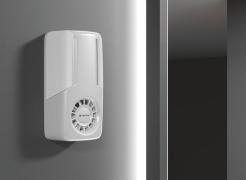
uses non-pressurised refills, avoiding propellants and aerosols, which simplifies transportation and storage.
V-Air Flow is designed for smaller spaces where limited airflow can reduce the effectiveness of passive scenting methods. It uses the Venturi effect to draw air over a 50 per cent plant-based refill and features an intelligent fan boost to circulate fragrance throughout a room. The dispenser is manufactured from 100 per cent post-consumer recycled plastic and incorporates an energyefficient fan that operates only when a building is occupied, reducing power consumption. www.vectairsystems.com
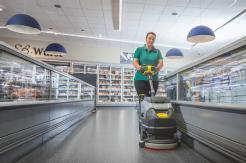
Kärcher has added the FloorPro Natural Industrial Cleaner RM 69N to its range of sustainable detergents. The product is formulated with over 99 per cent naturally derived ingredients and fully biodegradable surfactants, without the inclusion of mineral oils, colours or fragrances. The low-foam formulation allows
use in both scrubber dryers and manual floor cleaning applications, targeting light to moderate soiling.
The cleaner incorporates ingredients sourced from renewable materials, including coconut and maize, ensuring the surfactants are fully biodegradable. Its formulation places it in the lowest water hazard classification and it is not considered hazardous or a dangerous good under the CLP (Classification, Labelling and Packaging) chemicals ordinance. This classification simplifies handling and reduces associated costs for storage and transport.
The detergent is supplied in a canister containing 30 per cent recycled plastic. www.karcher.com
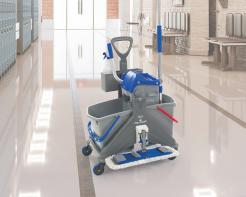
Filmop has developed OneFred, a modular washing system that can be configured with either two 15-litre or two 25-litre buckets, creating a 30- or 50-litre trolley according to operational requirements. Buckets with colour-coded handles help to separate cleaning solution from rinse water, supporting hygiene management. Compact and lightweight, OneFred includes an ergonomic handle for manoeuvrability and four integrated, impact-resistant bumpers to protect surfaces.
The system is available in several versions, including one equipped with the Peg Kit attachment system, which enables OneFred to connect with Filmop’s Alpha and Morgan trolleys. A version featuring the Uni-Connect fitting allows operators to attach and release mop holders or handles for window and surface cleaning tools, keeping essential equipment within reach while maintaining compact dimensions.
Sustainability is integral to the product design, the company
says. OneFred is manufactured partly from PSV-certified Plastic Second Life components, confirming the use of recycled materials. The absence of screws and metal elements allows complete recyclability at the end of the product’s life. www.filmop.com
Fimap has introduced a new generation of cleaning machines incorporating features designed to improve environmental performance and resource efficiency. Building on existing systems such as FSS - Fimap Solution Saver - which regulates water and detergent use, the machines now include the option to preprogramme cleaning zones. This helps to prevent waste and ensure consistent application. The FLR - Fimap Long Range - recycling system enables operators to clean larger areas using the same amount of water and detergent by reusing cleaning solution. And Fimap has also developed AQUÆ technology, which allows chemical-free cleaning by activating chlorine molecules naturally present in tap water.

Through the Fimap Fleet Management (FFM) monitoring system, users can track consumption, battery charging and CO2 emissions per working hour. The machines’ environmental performance is further supported by optional lithium batteries for energy efficiency, HEPA filters that retain particles down to 0.3 μm and tanks made from ReMade in Italy-certified recycled plastic. www.fimap.com
Greenspeed has introduced Trebio, its third-generation probiotic cleaning range developed to provide an alternative to traditional chemical cleaning.
At the centre of Trebio is the Trebio Consortium, a blend of three Bacillus strains selected for their complementary
enzymatic activity. These microorganisms break down organic residues such as fats, proteins and starches, helping to maintain a stable microbial balance on cleaned surfaces. This process continues after application, supporting ongoing surface hygiene and reducing the need for frequent intensive cleaning.
The formulation also manages odours, says Greenspeed. Instead of masking unpleasant smells, the probiotics act directly on the source, breaking down the organic materials.
By reducing reliance on harsh chemicals and extending the cleaning effect, Trebio supports lower resource consumption and waste reduction. Its packaging is designed for reuse and produced entirely from recycled plastic. The refillable bottle format aims to promote long-term use.
www.greenspeed.eu
Microred from TTS is a new microfibre flat mop that has been awarded the EU Ecolabel and was also tested by an independent laboratory for microplastic release during machine washing. It was classified as a low microplastic release product. Laboratory testing also assessed the mop’s effectiveness in removing microorganisms without the use of chemical detergents. The tests demonstrated Microred can eliminate 99.99 per cent of Staphylococcus aureus, Enterococcus hirae, Pseudomonas aeruginosa, and Candida albicans. Other studies showed a single pass of the mop reduces Coronavirus 229E by 99.9 per cent.
The design promotes high collection efficiency, allowing cleaning with reduced water and chemical use. By combining mechanical action with sustainable materials, Microred provides a cleaning solution aimed at lowering chemical consumption, limiting impact and reducing the risk of developing disinfectant-resistant bacteria. www.ttsystem.com





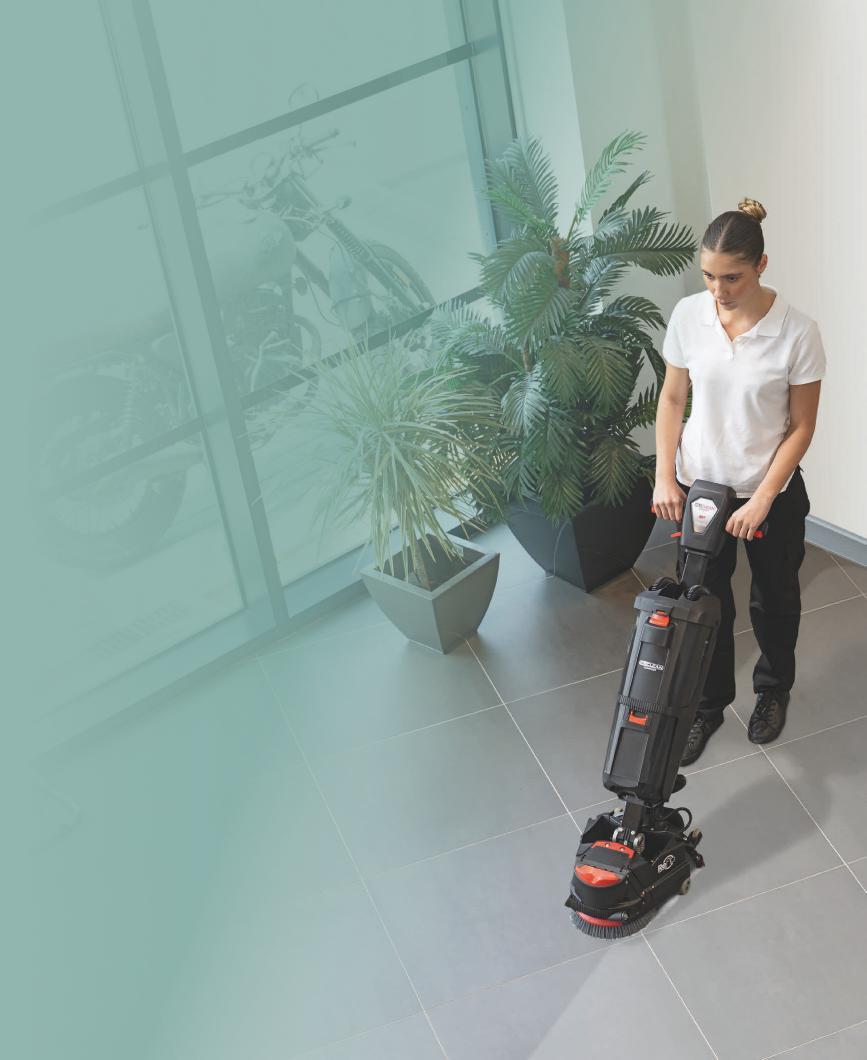
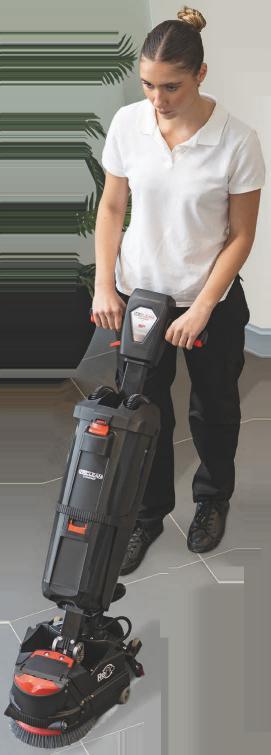
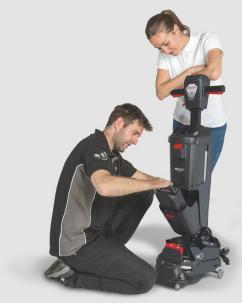

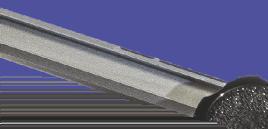
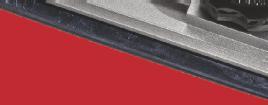

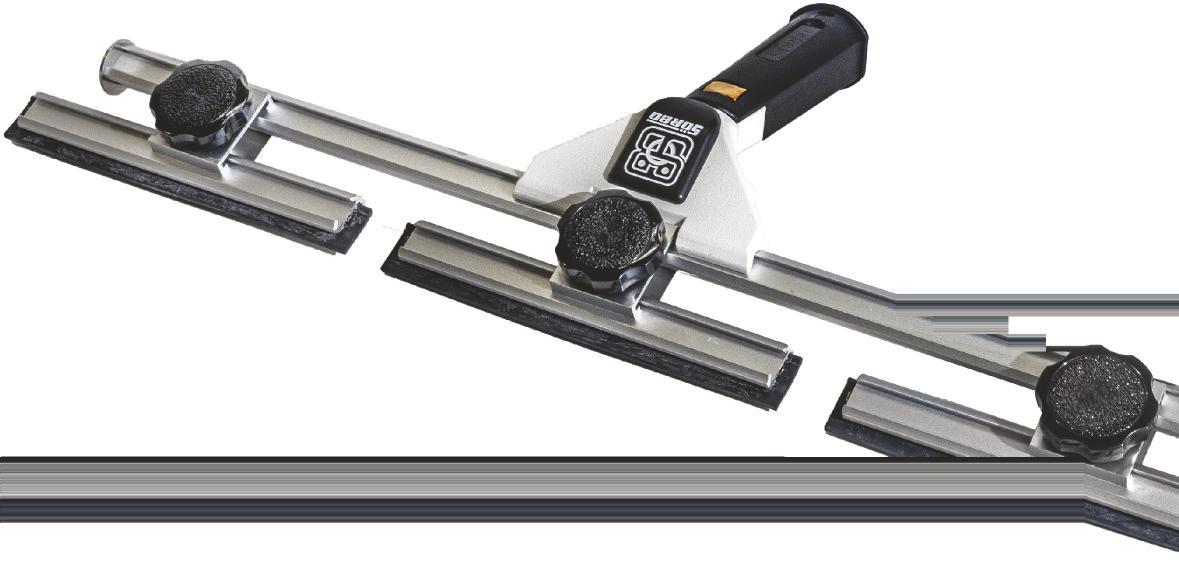

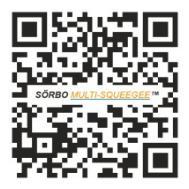











THERE IS A LOT TO TELL about toilets and toilet habits. Apart from my own experiences, there is a great deal of information easily accessible online, and there are even a few books about toilets available. In terms of cleaning however, the smallest room in the building still has its issues.
Splashing the dirt
Men urinating while standing up causes urine contamination on the seat and the area around the toilet. A solution was found decades ago: the urinal, a special toilet version mounted higher on the wall and thus reducing the fall height of the urine.
However, there are also public washrooms without urinals. Or, if for whatever reason, the man wants to have more privacy and prefers to close himself off, he pees in a normal toilet anyway. Hopefully he sits down or at least puts up the lid, but unfortunately many don’t. Which is very unhygienic for the next visitor using the same toilet and needing to sit. Knowing this, the learning for cleaning is: always clean the area around the toilet thoroughly as well (floor, wall) and don’t forget the tools that are positioned next to the toilet (toilet brush holder, bins). They probably are sprayed over as well.
Disturbing stripes
Another issue is toilets featuring a shelf or inner walls where poop slides down before reaching the water, leaving visible streaks. To be removed with a toilet brush. A ‘dirty job’ which is often neglected. Not removing it immediately means it will dry and be harder to remove later. And don’t forget that a dirty toilet causes a negative perception for the next visitor. What about the brush or toilet bowl mop? Often very dirty, sitting in a holder filled with contaminated fluid. Unhygienic and in healthcare environments I guess it is a source of cross contamination. Room for improvement I would say. If product designers are able to solve these issues in an innovative way, it will be a major step forwards.
Tips: after cleaning the toilet, keep the
brush in the toilet bowl while flushing and move it up and down to rinse it. Use a piece of toilet tissue to absorb the fluid in the toilet brush holder.
Lid closed
Search the internet and you will find videos demonstrating droplets from the toilet flush water descending around the toilet. Including all the invisible dirt it contains. Lauren Aber, affiliated with Quinnipiac University (Hamden, Connecticut USA) discovered that the chance of poop particles ending up on your toothbrush displayed in the same room is no less than 60 per cent. She published her research in 2015.
During the continuous flow, very fine droplets are created that precipitate elsewhere while suspended in the air: aerosols. That’s why the toothbrush gets contaminated with dirt from the toilet. Not only Aber, but also other scientists discovered the Escherichia Coli, an intestinal bacterium, on toothbrushes that were displayed in bathrooms with a toilet. What we learn from this is that the lid on a toilet is there for a purpose. Closing the lid while flushing is hygienic and by the way, a closed lid looks better. So if you end up in a public toilet where the lid is missing: flush and run.
To sit, or not to sit
An interesting new idea to lower the incidence of urine-contaminated toilet seats, is to label washrooms differently. Not separating men from women, but separating by the need to sit from the option to stand. I recently spotted public washrooms with door signs that indicated ‘Sitting’ and ‘Standing’. A surprising, open minded, interesting, hygienic and effective solution.
And, by the way, gender neutral as well. Touchless
When I use a public toilet, I move the seat and lid with my foot, cover the seat with toilet paper, close the lid with my foot when I am done, push the flush button with my elbow, wash my hands, cover the
There is much to tell about toilets and toilet habits around the world. In terms of cleaning, the smallest room in the building still has its challenges. In this article industry expert Paul Harleman of Harlecom Products & Services addresses some of them and tackles a few other interesting topics.
tap with a paper hand towel before using, cover the lock handle with a paper towel when unlocking the door, open the door with my elbow and take care nobody sees what I am doing because, to be honest, I find it a little bit embarrassing.
However, an American survey executed by the Bradly Cooperation showed that I am not the only one. Seventy per cent of the respondents use toilet or towel paper as a barrier between themselves and the surface they have to touch or sit on. Forty-six per cent use their foot to press the flush button and 70 per cent of Americans said they have had an unpleasant experience in a washroom due to the poor condition of the facility. The learning we have here is the clear need for touchless operated toilets.
Design differs
There is a wide variety of toilet types around the world. User positioning can be sitting, squatting (hole in the floor) or standing (urinal). Modern toilets have flushing systems including gravity flush, dual flush, vacuum (aeroplane) but manually flushing still exists as well (bucket with water). And there are also toilets that don’t flush (compost toilets). To finalise ‘the bigger job’, toilet paper is often used,
Toilet challenges (continued from page 25)
but some cultures use toilets with a shower system - integrated in the toilet or in a separate device (bidet). Toilets are made of stainless steel, ceramic or synthetic materials and ‘output management’ varies from public sewer/water purifying systems to sceptic tanks to compost systems.
Last but not least, the design of a toilet varies from ultra-modern to very basic with the rough distinction of free hanging on the wall or standing on the floor. For those who want to have all the comfort they can get when disposing food and drinks leftovers, get yourself a Japanese designed Toto Neorest WX2 toilet which is equipped with the latest comfort technology.
What the future will bring
Toilets may seem mundane, but they reflect the values, resources and challenges of a society. While western nations focus on comfort and technology, many others prioritise simplicity and sustainability. Future toilets will blend technology, healthcare and environmental consciousness - aiming to solve global sanitation problems while offering more personalised, hygienic and sustainable experiences. Toilets are evolving to address hygiene, water conservation, climate change and access to sanitation.
Key trends include:
Waterless and minimal-water toilets
• Use vacuum or dry flush systems (inspired by aeroplane and space toilets)
• Crucial in water-scarce areas
Smart toilets
• Integrated health monitoring (urine/fae-
ces analysis for early disease detection)
• AI-based usage pattern learning (eg, for elderly care)
• Connectivity to health apps
Self-cleaning and disinfecting toilets
• UV disinfection
• Antimicrobial surfaces
• Automatic bowl and seat cleaner
Energy-producing toilets
• Convert waste to biogas, fertiliser, or even electricity
• Already in pilot programmes in India and Africa
Modular and portable designs
• Flat-pack or solar-powered mobile toilets for disaster zones and refugee camps
Redesigned urban toilets
• Modular, space-saving units for dense urban areas eg, retractable public toilets)
• Privacy features and genderneutral design
Circular sanitation systems
• Closed-loop systems that recycle water and nutrients locally
• Aim: zero-discharge toilets (no waste, no sewer)
Public street toilets, a speciality
In 2001, Hong Kong unveiled the world’s most expensive public toilet: a fully functional solid gold loo. While it dazzled tourists, it also reminded us how something as ordinary as a toilet can reflect pride, technology and even national identity. Back in everyday public washrooms, the reality is far less glamorous. For cleaning and IPC professionals, public toilets are high-risk zones for pathogen transmission, especially on handles, flush buttons
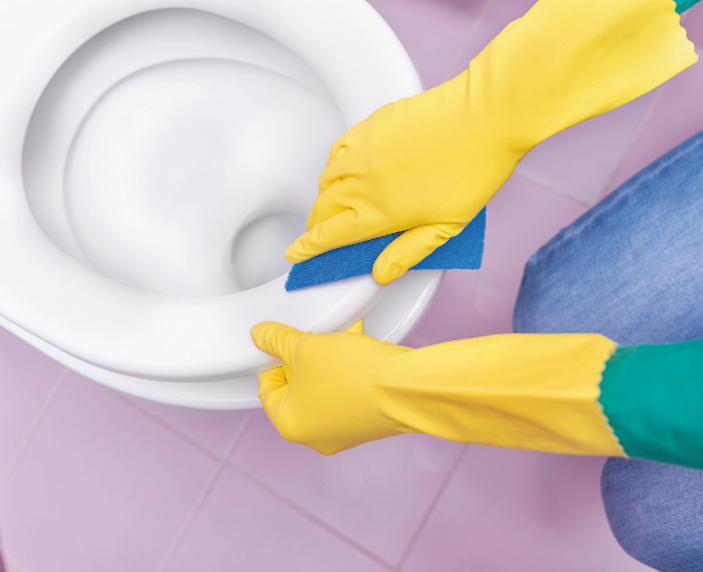
and taps. Odours often come not just from poor cleaning but from unseen biofilms in pipes and drains. And cleaning schedules rarely match the pace of foot traffic. But promising innovations pop up. Not only in the toilet-specialised Japan but also in the Netherlands. A company called Sanitronics designed an public toilet with an integrated, fully automatic toilet cleaning machine. Cleaning is crucial
Professional toilet and washroom cleaning is essential for hygiene and a positive reputation of a facility. Public washrooms can quickly become sources of infection if not cleaned properly - spreading bacteria, viruses and fungi. This is especially critical in healthcare, hospitality, education and food service, where poor hygiene can lead to health risks, complaints, or even legal consequences.
Many organisations can improve their approach by moving beyond fixed schedules and adopting cleaning routines based on actual usage. Areas like flush buttons, toilet seats and door handles need extra attention, as they are frequently touched. Well-trained staff, proper professional tools and clearly defined protocols are key to maintaining standards.
Investing in ergonomic equipment, colour-coded materials, microfibre cloths and mops that are certified to remove 99.99 per cent of the micro-organisms also improves both effectiveness and efficiency.
Wall-mounted toilets and seamless floors make cleaning easier, as well as touchless systems. Just as important is to recognise the role of the cleaning staff. Providing time, tools and respect ensures a safer environment for everyone and promotes a culture of cleanliness and care. A clean and well maintained washroom is demonstrating hygiene by itself and does not need a wallpaper with an overview when the cleaning was done. The only thing this paper says is that someone wrote a date, time and signature on it. It is just a piece of paper and no cleaning evidence. In the end, the cleaner is the most important person in the smallest room. Remember that and show respect by using the brush when needed.
Billions of people around the world still don’t have access to a good and safe to use toilet. World Toilet Day is observed each year on November 19 to bring attention to the lack of toilets for people globally. It encourages everyone to learn and spread the word about how proper toilets and sanitation can save lives.
www.harlecom.nl


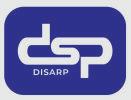



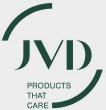


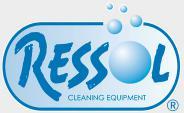




































































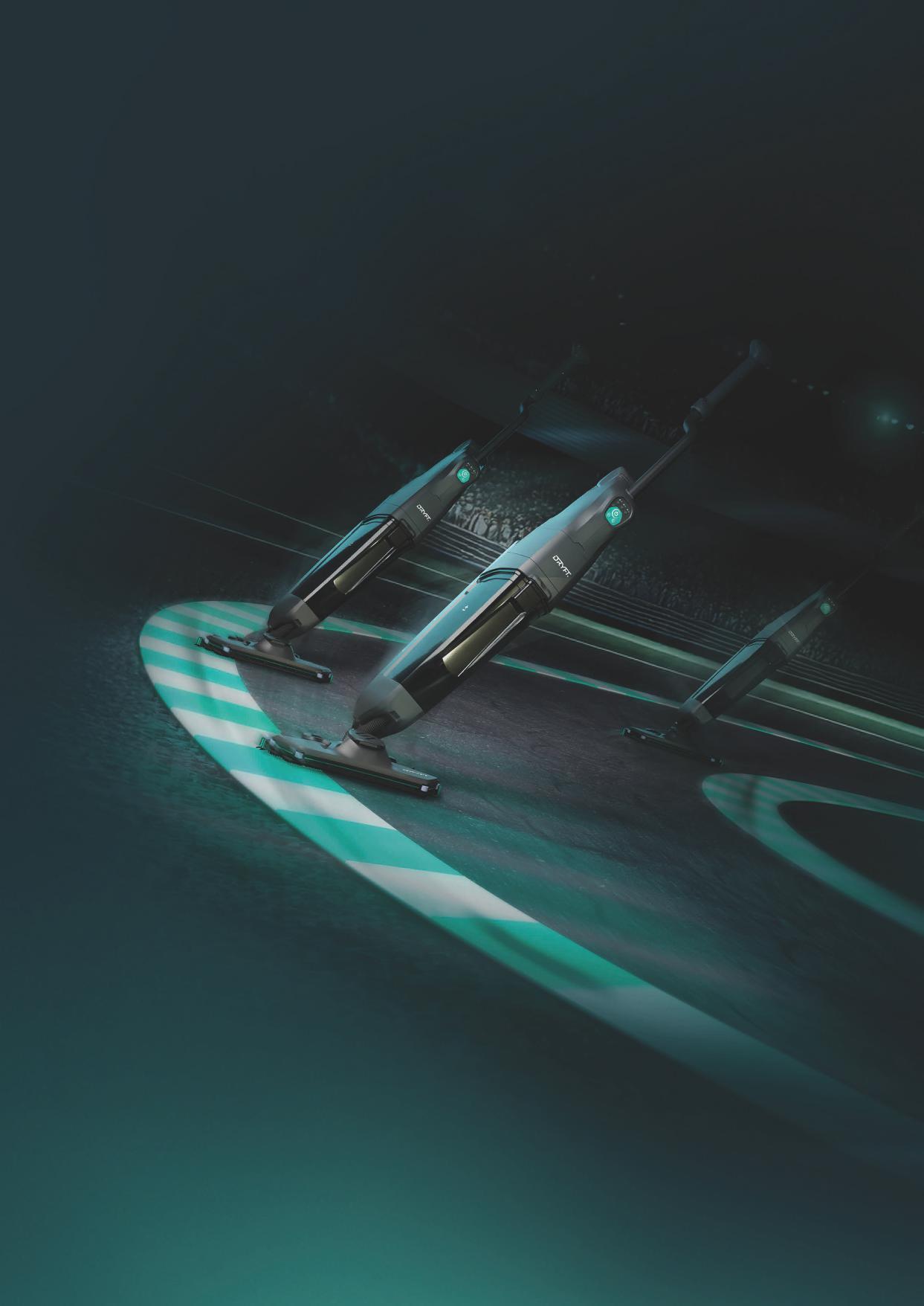
“What if you could clean floors twice as fast?”Imre Killi, CEO & Inventor
In a world where labour shortages are the number one challenge facing cleaning companies, there are only two ways forward - do the job faster or turn to robotics. But what about those hard-to-reach areas where robots can’t go?
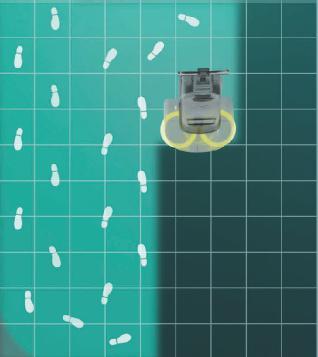

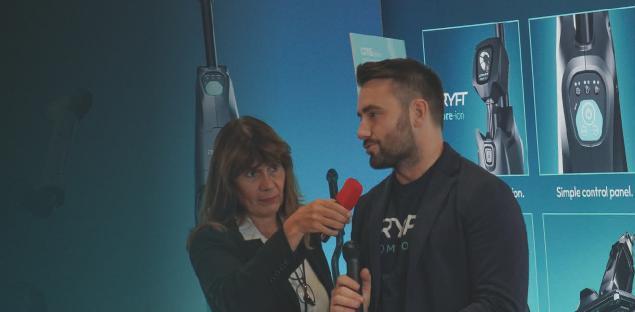

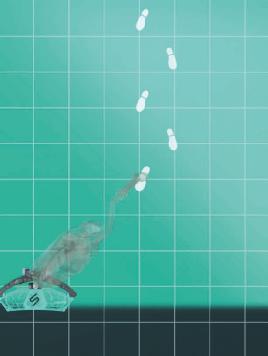




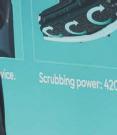





Watch comparison video here. Watch here

Traditional walk-behind scrubber dryers with T-handle grips require operators to walk up and down the same area four times just to clean a 1.6m wide section. Combined with slow 150-400rpm rotary brushes, this is not only time-consuming - it’s costly.
When labour makes up 80% of cleaning costs, inefficiency becomes expensive. Every extra pass is money walking out the door.
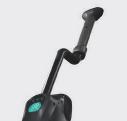
Our unique handle design enables S-Motion movement, allowing the operator to clean 1.6m width in a single forward pass.



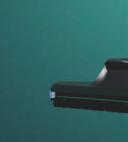
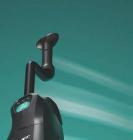
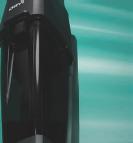
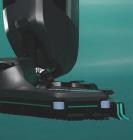




We designed DRYFT to be the fastest floor cleaning machine ever created, enabling you to clean twice as fast, freeing up valuable time and resources. Our goal was simple: make floor cleaning dramatically faster whilst delivering incredible cleaning results.
To achieve this, we had to reinvent three critical components:
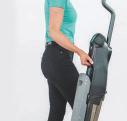
To achieve fast and effortless movement, DRYFT was engineered to be ultra-lightweight, powered by the latest brushless motors and advanced lithium-ion battery technology.

If the machine is moving faster we had to scrub faster too, DRYFT introduces next-generation oscillation scrubbing technology at 4200rpm.
The real question: What would you do with the time saved?
If you could clean every floor twice as fast, how much time - and money - would that save your business? Would you:
• Clean more facilities with the same team?
• Reduce your labour costs?
• Finally overcome the staffing shortage holding your business back? With DRYFT, cleaning companies can do more with less, delivering faster, more efficient, and more profitable cleaning - all with the human touch that robotics can’t reach.

So what’s the problem with traditional walk-behind scrubber dryers?



An increasing number of washrooms are installing notouch dispensers for soap and paper products in a bid to optimise hygiene. But are these systems becoming the norm, or do some people still prefer manual alternatives? And are there any disadvantages to touch-free systems? We ask companies their views.
systems are clear, says Andrea Dold from Hagleitner’s public relations department. ”They maximise hygiene and reduce the risk of germ transmission,” she explained. “Sensor-controlled dispensers also release soap, disinfectant, paper towels and fragrance without the need for any contact with the user. And this actively prevents cross-contamination in sensitive areas such as hospitals and public washrooms.”
Touch-free dispensers also help to encourage usage, she adds. “They are intuitive to operate and convey an image of hygiene, reliability and modernity,” said Dold. “Numerous studies and professional articles underline the benefits of no-touch systems with regard to hygiene, userbehaviour and cost efficiency.
Industry standard
IT WAS BACK IN THE 1980’s when Australian inventor Norman Wareham invented the touch-free electronic sensoractivated water tap. The aim was to prevent the transfer of bacteria in sensitive environments such as hospitals and food preparation areas. The taps were so successful that they were adopted worldwide, with Wareham being awarded patents in a number of countries including the UK, the US, Canada, Australia, Germany and New Zealand.
Similar technology has now been widely applied to other washroom fixtures such as toilet flushes, hand dryers and dispensers for soap and paper. Besides helping to prevent the risk of cross-contamination, no-touch units also ease the cleaner’s burden because there are fewer fingermarks to clean away.
But are such systems beginning to replace traditional dispensers? Do notouch units have any disadvantages? And do some customers and end-users still prefer manual versions to sensoroperated ones?
The advantages of no-touch washroom
“And when combined with digital networking their potential grows even further. Smart dispensers can provide real-time information about fill levels, consumption and energy status. For cleaning staff this means reduced service effort plus the ability to plan refills more precisely, increasing user satisfaction.”
Consumption monitoring makes demand-driven stock management possible, says Dold. “This not only cuts costs, it also reduces delivery trips and therefore CO2 emissions.”
Operators are increasingly switching to touch-free dispensing systems in public, high-traffic and hygiene-sensitive areas such as hospitals, schools, restaurants and airports, Dold says. “These systems are steadily evolving into the industry standard.”
She claims sensor-operated units also offer sustainability advantages. “No-touch dispensers release exactly the right amount of product, reducing consumption and refill frequency,” she said. “This lowers resource use along with environmental impact.”
However, some customers still prefer manual dispensers over touch-free alternatives, Dold admits. “This is for various
reasons such as lower purchase costs and simplicity - particularly in smaller, less frequented environments,” she said.
“However, no-touch systems are experiencing a clear upward trend, particularly in settings where hygiene, user comfort and digital monitoring are paramount.”
Hagleitner’s XIBU hybrid series incorporates dispensers for a range of washroom consumables including toilet tissue, paper towels and foam soap. They come with a digital tool for dispenser and hygiene data management along with the Hagleitner360 app. All devices provide application data on consumption, fill level, energy status and service needs which is available in real time via a smartphone, laptop or PC. No-touch dispensing offers a range of benefits and helps to enhance hygiene, efficiency and user experience, says Essity communications director Jenny Turner.
“By eliminating the need to touch the dispenser these systems reduce the risk of cross-contamination, which is particularly important in high-traffic environments,” she said. “The touch-free experience is also reassuring for users and signals a commitment to cleanliness and care. And it helps to create a cleaner, more hygienic washroom environment whether the system concerned is an automatic, sensor-activated dispenser or a manual system that gives out the product without any need for the user to touch the unit.”
One potential drawback of automatic systems is that they inevitably require batteries or an energy supply, she said. “No-touch systems that don’t work automatically - such as those that incorporate arm levers or foot pedals or units that offer self-presenting towels - are highly effective and offer a number of advantages,” she said. “They provide a hygienic experience without relying on power sources, making them ideal for locations where electricity access is limited or where battery maintenance could be challenging.
“Manual no-touch solutions also require minimal maintenance. And they combine
hygiene with simplicity plus an intuitive operation while also offering single-sheet dispensing, and this helps to reduce consumption and waste.”
Essity’s Tork SmartOne Toilet Paper System offers touch-free dispensing without the need for power, while the Tork Matic Hand Towel System incorporates no sensors or batteries but is said to provide controlled touch-free dispensing.
Some customers continue to prefer manual dispensers to touch-free ones, says Turner. “This is particularly the case in settings where simplicity, cost-efficiency and ease of maintenance are the chief priorities,” she said. “However, in the 2025 Tork Insight Survey it emerged that 45 per cent of washroom users considered touchless technology such as automatic taps, soap dispensers and flush systems to be must-have features for comfort and hygiene while only 10 per cent of respondents said they felt no need for these systems at all.”
However, she adds that no-touch systems on toilet flushes and taps are not strictly necessary because people tend to wash their hands after operating them. “Nevertheless, these systems do help to contribute to a more hygienic and reassuring washroom experience,” said Turner. “They prevent the spread of germs before hand washing even begins, reinforcing a sense of safety and care. For many users these features signal a high standard of cleanliness and attention to detail which can positively influence their perception of a facility.”
Tork offers a range of touch-free solutions including sensor-operated soap and hand towel dispensers. The company also offers manual no-touch options where the user only touches the tissue they take.
Kimberly-Clark Professional’s head of sales for France Mick Girardin says no-touch washroom systems are fast becoming the norm in commercial and public spaces across Europe.
“From sensor-activated taps and flushes to automatic soap and towel dispensers, these offer more than just convenience - they reflect a growing commitment to hygiene, sustainability and user experience,” he explained.
“The fact that you only touch the paper you use and there is minimal contact between the dispenser and the user means cross-contamination is reduced while the system is also easier to maintain and clean.”
Investing in touchless technology demonstrates a level of care and credibility for businesses, Girardin adds. “It enhances
brand perception, reassures users and future-proofs facilities in a world where hygiene expectations continue to rise,” he said.
However, touchless systems are not without their drawbacks, he adds. “While often billed as being sustainable, many of these systems rely on battery power or electricity which can offset environmental gains, particularly in high-traffic settings,” he said. “Some customers prefer manual washroom dispensers because they don’t want to use batteries.”
The Kimberly-Clark Icon electronic hand towel dispenser works via both battery and mains power. The unit is said to offer intuitive visual lighting cues and give out 150,000 hand towel dispenses on one set of batteries. It is also claimed to offer a 99.9 per cent jam-free performance.
Manual dispensers do offer some advantages over automatic ones, according to Girardin. “This is particularly the case in environments where cost-efficiency, control and maintenance simplicity are key,” he said. “They are generally more affordable to maintain because they don’t rely on the regular replacement of batteries. For settings where hygiene is still a priority but where budget and practicality are crucial - such as in schools, small businesses and on industrial sites - manual dispensers can be a smart and dependable choice.”
However, dispensers can be touch-free without the need for sensors or batteries, he adds. For example, Kimberly-Clark Professional’s Aquarius soap dispenser has an arm lever that allows users to operate it with their forearm or elbow. “This
minimises hand contact while reducing the risk of cross-contamination which is particularly important in healthcare, food service and washroom settings,” says Girardin. “It also enhances accessibility for individuals who have limited hand mobility or strength, providing a more inclusive solution. And arm levers can improve the user experience by offering smoother and more controlled dispensing which helps to reduce waste and ensure a consistent product delivery.”
He agrees with Turner no-touch tap and soap systems that are used before hand washing takes place are not strictly necessary. “However, the more no-touch systems you have in place in hygienecritical sectors, the lower the risk of crosscontamination,” he said. “It is important in these environments to communicate to staff and users how the facilities protect them from contamination and provide good hygiene.”
He believes no-touch systems are increasingly replacing traditional washroom dispensers. “This is a positive trend because people have become much more aware of the importance of hand hygiene since the pandemic,” he said.
Essity’s Jenny Turner agrees that no-touch systems are on the rise. “We are seeing a clear shift towards them across various sectors from hospitality and healthcare to education and office environments,” she said. “This is a positive development and reflects a growing awareness of the need for hygiene and sustainability.”
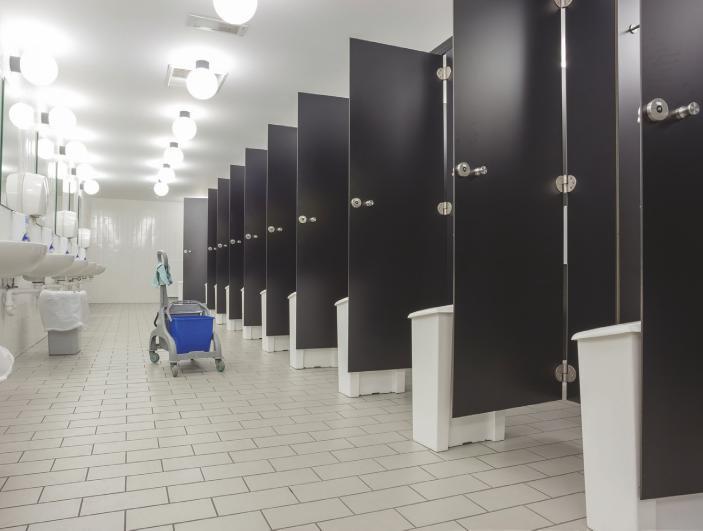
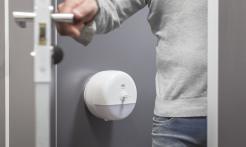
Tork offers a range of washroom dispensers designed to avoid the need for the user to touch the unit. These include sensor-operated models alongside those that automatically give out a new sheet of paper once the previous one has been taken.
The Tork Foam Dispenser with Intuition is touch-free. The sealed refill bottle prevents soap contamination before use and the LED display indicates when a new cartridge or batteries are required.
The Tork Matic Automatic Hand Towel Roll Dispenser has a functional, modern design. It offers one-at-a-time dispensing for reduced consumption
and increased hygiene, and the LED refill indicator alerts the cleaner when the unit needs to be topped up.
Tork Matic is also available in a manual version where the paper towels are self-presenting, which means each visitor only touches the paper they use.
The Tork SmartOne Toilet Paper dispenser is also designed to give out only one sheet of paper at a time and the hygienically-encased tissue is drawn out via a nozzle at the front.
www.torkglobal.com
MPH1865 has introduced Easycut, a central pull toilet paper dispenser under its eco-designed Renovelar brand.
The touch-free Easycut dispenses sheet by sheet, which reduces paper consumption by up to 50 per cent per use and supports a hygienic experience, says the company. When paired with the central pull toilet tissue, the
system provides approximately 20 per cent more autonomy, reducing the frequency of refills and associated downtime. Each roll contains 840 sheets measuring 25 cm, offering a high-capacity solution suitable for compact washroom spaces.
The system is also designed to reduce environmental impact. By limiting material use and cutting waste at source, Easycut is claimed to lower CO2 emissions by 35 per cent per use and paper waste by 36 per cent.
Features include a clear viewing window for monitoring paper levels and a secure locking mechanism to prevent misuse.
www.mph1865.com
Hagleitner’s XIBU METAL hybrid dispenser series combines the technology of its digital XIBU washroom products with solid stainless steel construction. The units dispense foam, disinfectant, paper and data - all touch-free.
The dispensers are constructed from solid stainless steel with a brushed finish and an antifingerprint coating. The design is intended to offer a clear, architectural presence while protecting surfaces from smudges and wear.
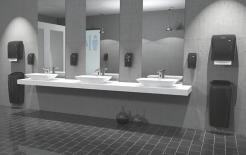
The hybrid technology incorporates digital monitoring, allowing cleaning staff to track output, fill levels and service requirements online. System refills provide higher capacity, contributing to operational efficiency and reducing resource consumption while also being more user-friendly.
Power for the dispensers can be supplied via three options: energyBOX, rechargeable battery, or standard power adapter - depending on site requirements. www.hagleitner.com


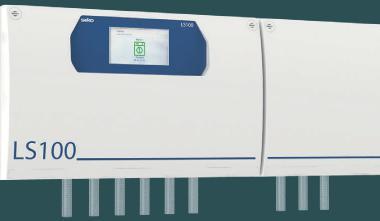
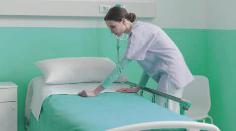

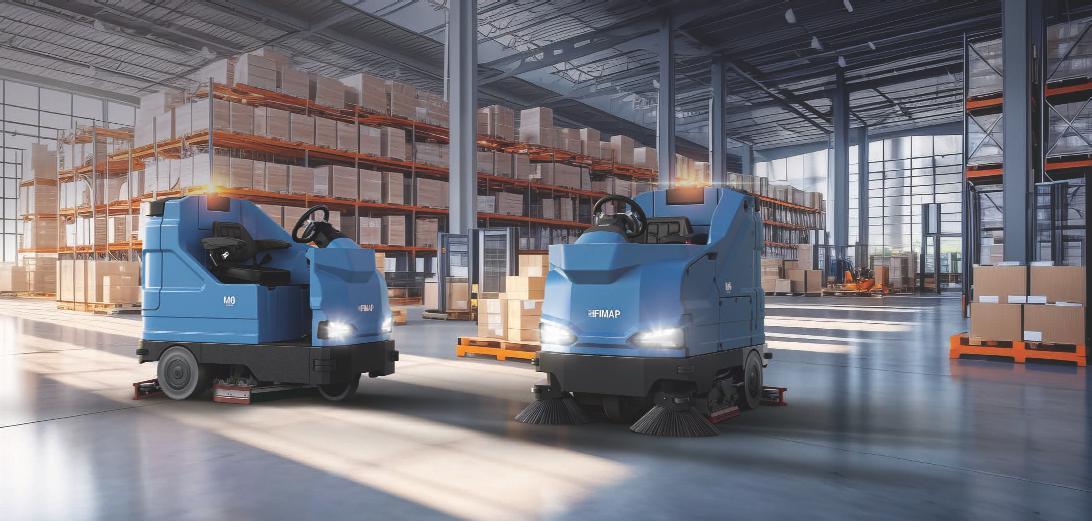
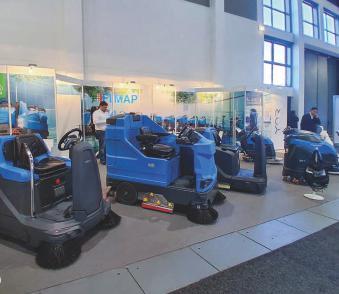
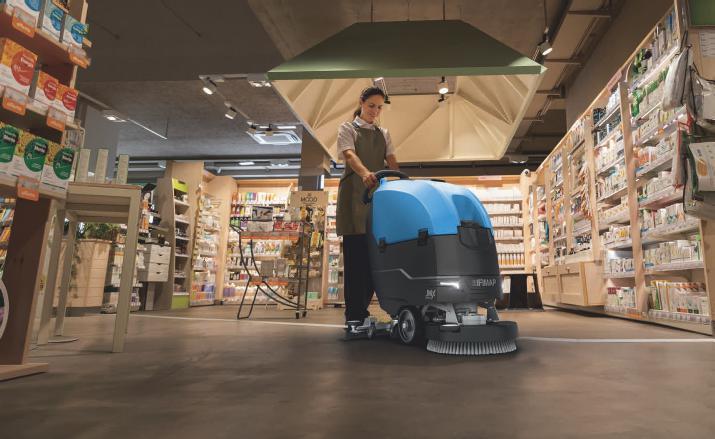

Brussels is rowing back on environmental legislation that is threatening to undermine the client-supplier relationship. The intervention is part of a wider purge of red tape stifling business innovation, investment and growth across the bloc, writes Hartley Milner.
BUSINESS LEADERS need no telling about the competitive advantages of having strong green credentials in this day and age. But nor do they need the hassle of being diverted from their core activities to deal with endless sustainability data requests from large corporations and financial institutions.
Yet that has become an almost daily distraction for SMEs since the European Corporate Sustainability Reporting Directive (CSRD) came into force in early 2023. The legislation requires companies with more than 1,000 employees to annually disclose, track and measure their sustainability performance, including energy use and greenhouse gas emissions.
Non-listed SMEs – those not publicly traded on a stock exchange – are exempted from mandatory reporting but are encouraged to cooperate with companies that do have to comply. However, to meet their CSRD obligations,
reporting corporations have been putting pressure on businesses of all sizes within their value chains to not only disclose their sustainability policies but also align them with their own.
Climate-heating emissions are the most challenging impacts for small businesses to measure accurately. Emissions can come from ‘capital assets’, such as buildings, machinery, computers and equipment, or from the transportation and distribution of goods, raw materials and other supply chain inputs.
Caught off-guard by the complexity of reporting requests, SMEs may not be in a position to respond, which risks giving the impression they are not fully onside with sustainability, or are being uncooperative. Clearly, this perceived ‘can’t do’ attitude can have damaging reputational and customer retention implications.
“SMEs are drowning under different requests and questionnaires from different business partners,” says employer group SMEunited. “Most of the time, the questions they receive are impossible to answer because they simply do not have the data they need to respond.”
As well as sustainability policies and processes, SMEs are being asked about their labour practices, ethics standards,
governance framework and the potential for future environmental impacts. Plus they may be requested to produce authenticated information such as hard copies of policy documents, certifications of environmental management systems, specific data on environmental metrics and information about their own supply chain. Any sustainability reports posted on global performance measuring platforms may also be requested.
Implementing a sustainability reporting regime can throw up formidable hurdles, including the cost. Businesses may need to update their technology, buying in tech systems to collate, manage and analyse sustainability data. Limited human resources can make it challenging to allocate staff and budgets to the development and maintenance of reporting practices. Smaller companies may find the reporting process itself intimidating due to their lack of experience and expertise in the area.
“With sustainability reporting, we have focused on the measurement of actions before giving entrepreneurs time to look at what actions to take and how to take actions,” said Sophia Zakari, SMEunited’s
director of enterprise policy and legal affairs. “SMEs are facing excessive demands for sustainability disclosures when they were never legally required to provide them. Micro companies, being the majority of European SMEs, are not ready to face this growing demand and it negatively impacts their businesses.”
In July, the European Commission adopted recommendations for a solution to the SME reporting dilemma. Devised by the commission’s technical advisory group, EFRAG, the voluntary standard for SMEs (VSME) sets out to make responding to information requests easier and less timeconsuming. The standard is designed for companies of varying sizes, from microsize (fewer than 10 employees) to small and midsize with up to 250 employees.
The VSME standard comprises a simplified disclosure structure based on two modules:
• Basic: disclosure requirements focusing on key sustainability topics such as greenhouse gas emissions, environmental impacts, workforce and anti-corruption. This module does not include disclosure requirements about company value chains.
• Comprehensive: nine datapoint disclosures likely to be requested by banks, investors and corporate clients. These include a short description of sustainability practices or future initiatives, greenhouse gas reduction targets and sustainability transition plans, as well as value chain disruptions and any exclusions from established EU reference benchmarks.
EFRAG has also provided practical guidance to help SMEs implement the standard.
The European Commission urges large companies and financial institutions to not overload small businesses with information requests but base them on the simplified VSME standard “as far as possible”. SMEs may wish to voluntarily report information to improve their access to sustainable finance and better understand and monitor their sustainability performance, “thereby improving their resilience and competitiveness”.
SMEunited strongly welcomes the voluntary reporting concessions, which it says must become “the unique questionnaire on the market”. However, it flags up that companies would still find compliance with datapoints set out in the VSME standard demanding and would need support with the reporting process.
“Member states must work with business organisations at national level to reach out
to a large number of SMEs and provide them with the training they need,” the employer group asserts.
The commission stresses that the adoption of the VSME recommendations should be seen as a “stopgap” to satisfy market demand, as the standard may need to be amended following a consultation which will include scrutiny by the European Parliament and Council. Until then, the measures at least provide a safeguard against excessive pressures on SMEs, helping them, the commission says, to “stay competitive while aligning with environmental, social and governance transparency and reporting”.
Also in July, EFRAG published revised drafts of its all-embracing European Sustainability Reporting Standards (ESRS) framework, which it claimed would result in a significant reduction and simplification of reporting obligations set out in the Corporate Sustainability Reporting Directive.
The makeover was undertaken in tandem with the release of the European Commission’s Omnibus initiative, a regulatory package adopted earlier this year with its primary focus on sustainability-related law reforms. EFRAG had been tasked with delivering a “critical simplification” of the 2023 reporting standards framework while preserving its relevance and alignment with the European Green Deal ambition to become the first climate-neutral continent by 2050.
Feedback from companies already reporting, as well as those preparing to do so, helped EFRAG devise a sustainability reporting process that is more manageable and accessible. Key revisions include a streamlining of double materiality assessment requirements and disclosures, reduced overlaps across reporting standards and greater clarity in their wording, plus the removal of all voluntary disclosures. More specifically, the headline changes are:
• Simplified double materiality assessment: the process for determining what is ‘material’ for reporting purposes. This now follows a clarified top-down approach starting with an analysis of the reporting organisation’s business model. Information requests need to be reasonable and proportionate, in line with more specific guidance on materiality thresholds.
• Improved readability and format: enabling companies to better understand what is required of them and to report with greater clarity. They also have the
option to publish an executive summary at the start of their sustainability statement making it easier for stakeholders to grasp key information.
• Voluntary reporting category deleted: only mandatory disclosures are retained in the main ESRS framework. Some of the voluntary requirements have been moved to a document called Non-mandatory Illustrative Guidance, which is designed to help companies understand and apply their reporting requirements.
• Relief mechanisms: new exemptions for situations where reporting would be excessively costly or difficult. These draw on inspiration from international standards such as ISSBs IFRS S1 and S2 which provide a baseline guide for sustainabilityrelated disclosures.
Focused and usable
• Materiality and financial effects: clarification addresses what EFRAG describes as the “gross versus net” issue in impact materiality (a company’s positive and negative effects). When assessing impact materiality, companies can now take into account “outcomes of any mitigation or prevention measures implemented before the impact occurred”, providing they were effective and would likely be in the future.
In total, mandatory datapoints have been cut by 57 per cent, and the full set of disclosures - both mandatory and voluntary - are reduced by 68 per cent. The overall length of the standards has been shortened by more than 55 per cent, making ESRS more accessible and implementable, especially for companies yet to be brought into the scope of the sustainability reporting directive.
“EFRAG is fully aligned with the strategic vision set out by the European Commission,” said Patrick de Cambourg, chair of EFRAG Sustainability Reporting Board. “These revisions aim to deliver what Europe needs at this moment … a more focused, more usable sustainability reporting system that remains ambitious but does not overburden companies. Capitalising on effective experience, this is about making ESRS a more workable reality so that sustainability reporting supports, rather than hinders, resilience, investment and long-term value creation.”
EFRAG is due to present any further ESRS changes to the commission by November 30 following its assessment of feedback from recent consultations. An implementation date is yet to be confirmed, but the commission has indicated that the ESRS will likely be finalised in mid-2026.


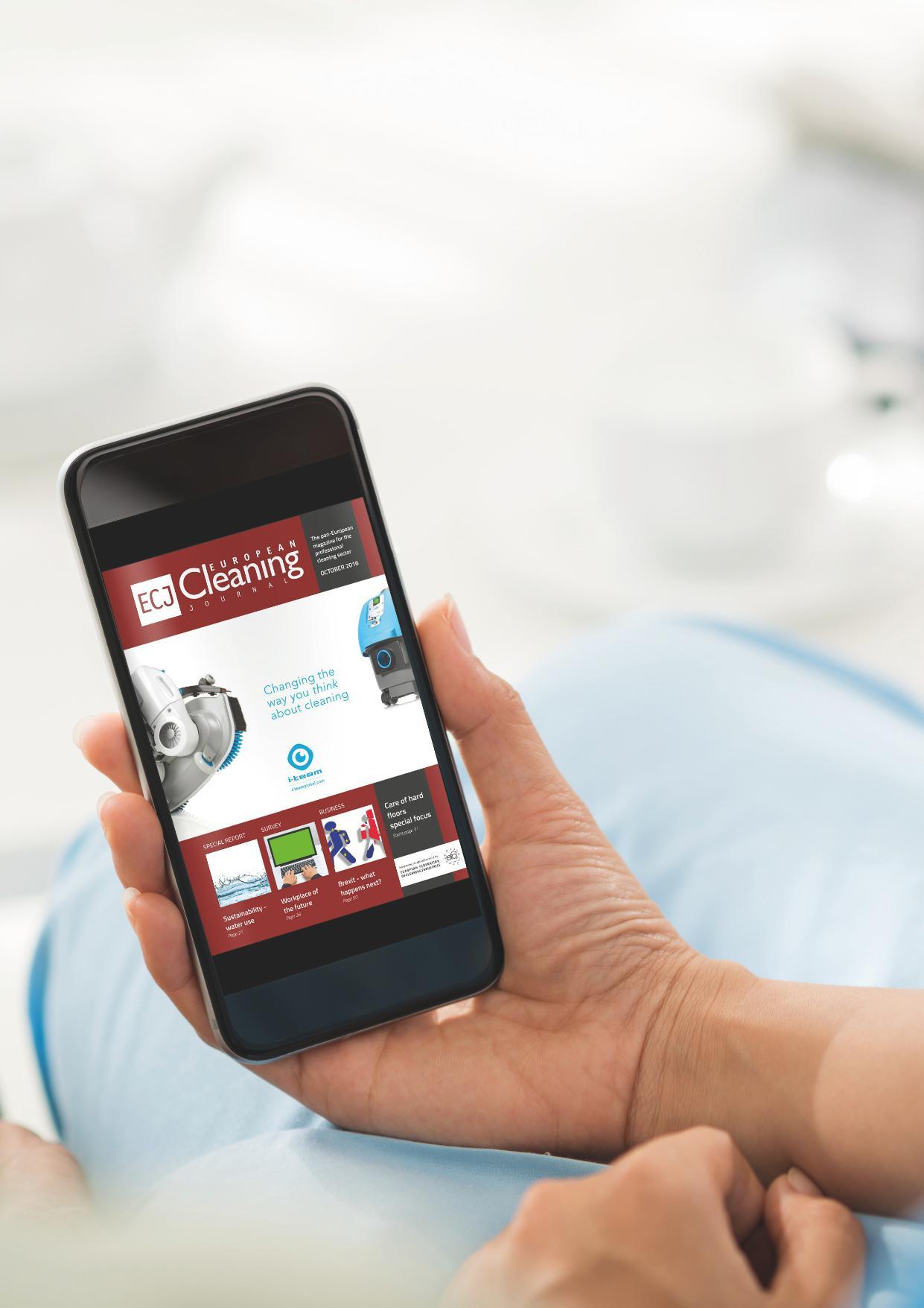


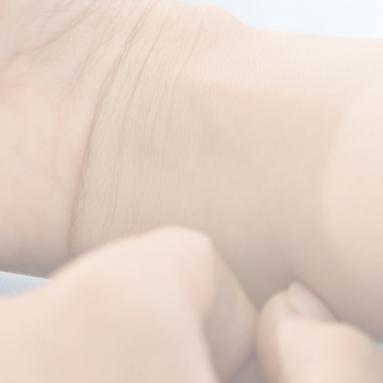

THE FUTURE IS HERE. Autonomous cleaning robots are increasingly being seen gliding around airports, shopping centres and other public facilities where they silently pick up the debris while diligently keeping out of people’s way.
So it seems that human cleaners have finally become redundant as far as floorcleaning is concerned. Or have they? Are robots really the best way of keeping commercial floors in tip-top condition? Or are humans still vital for monitoring robots and for cleaning those awkward nooks and corners?
Modern machines can carry out almost every step of the floor-cleaning and care process according to Hako’s application technology trainer and consultant Klaus Serfezi. “This covers everything from basic cleaning and polishing to ongoing maintenance,” he said. “Innovative technology and cleaning programmes ensure consistently high levels of quality and efficiency.”
But while robots can be helpful and supportive, they cannot fulfil every task completely, he adds. “They may offer many advantages for large, open areas - for example, in terms of efficiency, productivity and personnel deployment,” he said. “However, they are most effective when integrated into a well-thought-out overall concept.”
Trained personnel
Robots and machines require trained human personnel for set-up, monitoring and follow-up work, he said. “This is particularly the case when it comes to cleaning in corners or under furniture or rectifying technical errors,” said Serfezi. “Here a human cleaner using a manual system is often the only option.”
Manual methods are flexible, inexpensive and ideal for use in small or awkward areas, he said. “Automated solutions require a higher initial investment, infrastructure adjustments and technical expertise,” he said.
Hako’s Scrubmaster B75i robot has a new docking station while the Scrubmaster B260 R offers additional functions
such as an integrated high-pressure cleaner for greater user comfort. Also from Hako is the manual Scrubmaster B5 for use in smaller areas.
Today’s commercial floorcare machines are incredibly versatile according to Robert Scott sales director Alastair Scott. “Almost every type of hard floor from polished concrete and stone to vinyl and ceramic can be cleaned, polished and maintained using the right equipment,” he said. “Machines excel at covering large areas quickly and efficiently. However, intricate spaces, uneven surfaces or delicate finishes may still require a skilled human touch. The best results often come from a hybrid approach: using machines for the broad strokes and manual tools for the details.”
Robotic cleaners deliver consistent cleaning quality in large, open spaces, he says. “They work to set schedules while freeing up staff for more skilled or detailed work,” said Scott. “However, many facilities find that combining robotic cleaning with manual methods gives them the most flexibility and achieves the highest standards. It all depends on the cleaning regime, the type of space and the desired finish.”
He says people are still vital for monitoring robots, operating machinery and carrying out cleaning in nooks and corners. “And that is unlikely to change soon,” he said. “Machines are excellent at what they’re designed for, but humans provide the flexibility, awareness and problem-solving abilities to adapt to different conditions.”
Manual cleaning is often the best option in restricted or high-traffic areas where extra attention is needed, according to Scott. “It is also highly versatile since a mop and bucket can access places where even the smallest machine might struggle,” he said. “Manual methods are less costly to start with and require minimal set-up, making them a practical choice for many situations.”
As well as their higher initial cost, automated systems often also require training,
In the age of the robot, to what extent can today’s hard floors be cleaned and maintained entirely by machines? Ann Laffeaty quizzes industry players on their views.
maintenance and software updates, he said. Robert Scott is said to offer ergonomic, lightweight manual mopping systems along with robotic scrubber-dryers claimed to offer improved navigation, safety sensors and customisable cleaning schedules.
Machines can be valuable allies when it comes to cleaning large surfaces, according to Filmop’s business development manager Paolo Scapinello.
“However, they cannot be used exclusively as this would present significant limitations in terms of precision and adaptability,” he said. “Manual equipment allows for targeted intervention and can be adapted to specific needs, reaching in every corner and easily bypassing obstacles. Their use therefore remains the most efficient solution and is essential if you want to achieve a thorough clean.”
Robots still have limitations that can only be overcome with the use of manual equipment, he says. “They move easily on large, smooth, uncluttered surfaces but have difficulties when faced with irregularities or obstacles and they struggle to reach corners and clean under furniture or in narrow passages,” he said. “They also need to be equipped with the right tools to effectively deal with different levels of dirt. And the help of a professional is required to choose the most suitable tool for the job.”
He says a trained operator is indispensable for evaluating the type of surface and the level of dirt in question. Filmop
Care of hard floors
Do we need a human? (continued from page 37)
offers a range of products and systems along with training support.
Manual cleaning offers clear advantages in terms of operation and cost, says Scapinello. “Manual equipment is compact and versatile which means it can clean areas of any size and will quickly adapt to specific needs, overcoming the limitations imposed by machines,” he says. “It is also the ideal solution for urgent cleaning. And well-designed manual equipment made with quality materials allows for significant savings in water and chemicals, thus minimising the related costs.”
Filmop’s manual systems include the recently-patented Globo, which is said to adapt to needs of the cleaner. Globo consists of a touch-free foldable mop holder and mops with micro-flaps and is said to facilitate cleaning and protect the operator’s health.
Kärcher’s robotics product management Alina Seitter believes robots offer significant advantages when used in large and uniform areas. “They can work autonomously, deliver consistently high cleaning quality and reduce personnel costs,” she said. “Digital systems also make an important contribution in recording the quality of cleaning performance. And fully autonomous robots offer the advantage of being able to clean at night without the need to deploy human cleaners.”
However, she adds that manual floorcare methods offer flexibility when cleaning complex surfaces or in cases of heavy, localised contamination. “They require a lower initial investment and are more adaptable to changing requirements,” she said.
“Automated solutions can incur higher purchase costs and require a certain infrastructure as well as staff training. Their efficiency is greatest on large areas but they may have limitations in complex environments or when being set up in a
new location.”
Kärcher offers the KIRA B 50 and the larger KIRA B 200 autonomous cleaning robots for use in wide open areas. For manual and semi-automated cleaning the company’s advanced scrubber dryers are said to offer high efficiency and userfriendliness. Kärcher also offers a range of manual cleaning tools.
Industrial Cleaning Equipment marketing manager Ria Ashford agrees that the vast majority of hard floor cleaning, polishing and maintenance tasks can now be performed effectively by machines.
“Advanced scrubber dryers, robotic machines and high-speed polishers allow facilities to achieve exceptional standards with minimal manual input,” she said. “At ICE we have seen a major shift as more businesses adopt robotic technology to streamline their cleaning operations.”
Modern robotics offer advanced sensors, AI navigation and real-time monitoring which allows them to clean safely, consistently and without the need for constant supervision, says Ashford. “This not only ensures high-quality results but also frees up cleaning teams to focus on more detailed or complex tasks,” she explained. “While occasional manual work may still be required for detailed or specialist applications, machine-based cleaning now leads the way in efficiency, consistency and sustainability.”
The higher upfront investment required for automated solutions can be off-putting for some, she says. “However, this cost is quickly offset by savings in labour, water and chemical usage along with increased operational efficiency and consistency in cleaning standards.”
“There can also be a learning curve when integrating automation into existing cleaning operations. Staff may require training and some adjustments to workflows might be needed. But with the right

support, the transition can be smooth and highly rewarding.”
ICE Activ8 is said to increase productivity by up to 70 per cent while also improving posture and reducing fatigue. It is described as a multi-dimensional cleaning system for floors, glass, lowprofile spaces, table-tops and edges and is claimed to offer savings in water and cleaning solution usage of 80 per cent.
So, is a human strictly necessary in today’s floorcare industry? Yes, says Ashford. “While technology has transformed floorcare, humans remain an essential part of the process,” she said. “The most effective cleaning strategies combine advanced machines with skilled operators and supervisors.”
Humans provide flexibility, experience and situational awareness - particularly when carrying out complex tasks in unforeseen situations, says Hako’s Klaus Serfezi. “They also provide quality assurance and ensure that the interaction of different cleaning solutions is optimised.”
Crucial skill
Kärcher’s Alina Seitter agrees that humans bring crucial skills to the floorcare industry. “While machines and robots can take on repetitive and large-scale tasks, humans can assess the degree of contamination, adapt the cleaning method to the requirements and offer flexibility in unforeseen situations,” she said. “Humans are also indispensable for strategic planning, maintenance and machine-monitoring as well as for cleaning hard-to-reach niches and corners.”
Robots require set-up, supervision and maintenance, says Robert Scott’s Alastair Scott. “This creates opportunities for cleaners to develop new skills and oversee more advanced equipment,” he said. “Manual cleaners excel at handling specialist tasks, responding to unexpected messes and ensuring that high-impact areas receive extra care.”
He believes it is unlikely that manual floorcare methods will be replaced by machinery for the foreseeable future. “While automation is advancing rapidly, there will always be situations where manual cleaning is more effective, faster or more cost-efficient,” he said. “The future is likely to be a partnership with machines doing the heavy lifting while humans add the finishing touches.”
Filmop’s Paolo Scapinello concurs. ”I don’t think manual equipment will be replaced by machines because it can be adapted to different needs and because it allows the operator to reach everywhere, bypassing any obstacles and ensuring an effective clean,” he said.
Ecolab has introduced MAXX Synbiotic, a cleaning product designed for hard floors in high-traffic and hygiene-critical environments. The formulation combines biodegradable surfactants, probiotics and prebiotics in a multi-stage process aimed at maintaining cleanliness and reducing re-soiling.
Traditional probiotic cleaners rely on surfactants for initial cleaning, with probiotics continuing the process after application. MAXX Synbiotic uses a similar approach but incorporates prebiotics to sustain microbial activity over time. This extended action is intended to

limit odours and prevent dirt from reappearing between cleaning cycles.
The product’s design seeks to support consistent hygiene standards while lowering the need for repeat cleaning and reducing operational pressures.
Customer feedback has indicated fewer odour issues, improved surface appearance and time savings during maintenance.
MAXX Synbiotic also carries the EU Ecolabel, uses biodegradable ingredients and features packaging made from post-consumer recycled materials. www.ecolab.com
Nexaro’s NR 1700 autonomous robot vacuum cleaner has undergone independent testing by SLG Prüf- und Zertifizierungs under the European standard EN IEC 62885-7:2020. In the test, which focused on textile flooring, the vacuum achieved
a dust pickup rate of 52.7 per cent, compared with 19.5 and 24.4 per cent recorded by two other models.

Developed specifically for commercial applications, the NR 1700 features a 250 mm suction width, precision navigation and a robust drive system. These functions enable the machine to clean effectively in complex spaces such as offices, hospitality areas or public buildings. The inclusion of a HEPA H13 filter allows the unit to capture 99.5 per cent of airborne particles - including fine dust, pollen and bacteria - contributing to improved indoor air quality.
nexaro.com
RCM has introduced LINK, a new range of scrubber dryers designed for cleaning mediumsized and congested areas. The machines combine compact dimensions with high productivity and are available in three versions: a 530 mm single-brush model and two double-brush models with 610 mm and 720 mm cleaning widths.
The system features technologies that regulate water and detergent use, ensuring resources are dispensed only when required. This helps reduce waste and extend operating time. An interchangeable battery supports continuous operation across longer shifts, while an intuitive steering wheel control panel and ergonomic design aim to reduce operator fatigue.
LINK also boasts the manoeuvrability typical of walk-behind machines with the productivity of ride-on models.
www.rcm.it

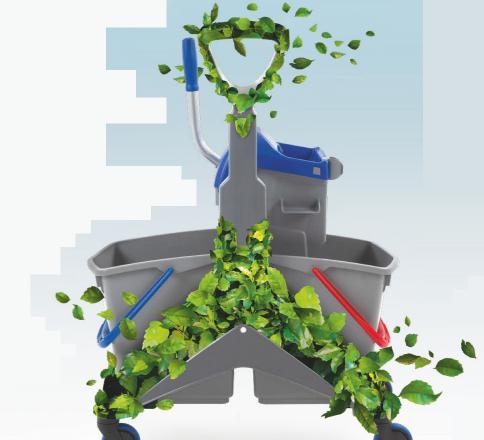

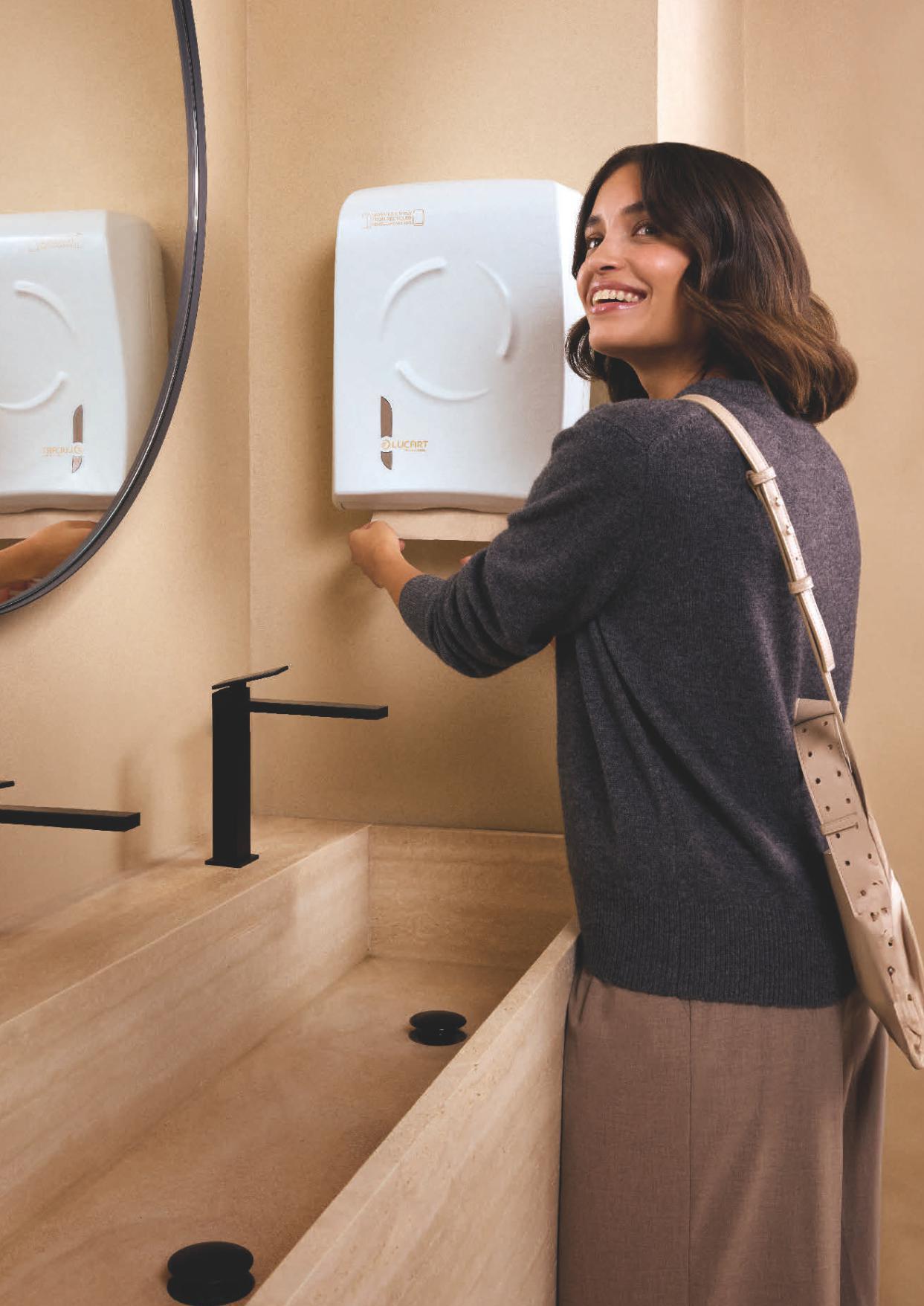
For 15 years, Lucart Professional has been turning beverage cartons into new resources, combining efficiency, hygiene and respect for the environment in the most natural way possible.
EcoNatural is the only paper + dispenser system based on a circular model that recovers and transforms the components in beverage cartons, using the cellulose fibres to produce the paper in the line and the aluminium and polyethylene to manufacture the dispensers. Make a responsible choice: with Lucart Professional and its sustainable innovation you give your customers hygiene and quality and do your bit to help the planet.
MotorScrubber developed DRYFT, a compact floor cleaning machine, as a solution to fill the gap between traditional mopping and larger scrubber dryers. DRYFT is designed to provide deep cleaning on both small and large floor areas, removing residues that may remain after conventional cleaning. Its compact form and ergonomic design allow it to be used in confined spaces as well as open areas, supporting consistent maintenance across different environments.
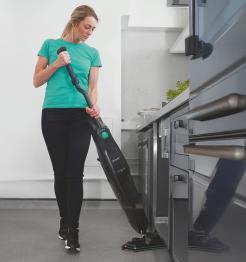
A key function of DRYFT is its capability for rapid spill response. In high-traffic locations where liquid spills can quickly cause safety risks, the machine allows cleaning staff to act promptly, removing fluids and drying surfaces in a short time. This reduces the likelihood of slips and limits disruption to facility operations.
Boasting mobility, ease of use and cleaning performance, it offers a practical solution for teams manoeuvring in both open spaces and tight areas, says Motorscrubber. www.motorscrubberclean.com
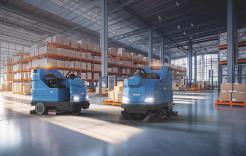
Fimap has introduced the MG scrubber dryer to meet demand for a compact yet robust machine suitable for industrial environments. Drawing on design features from the larger GMG model, the MG is built for use in
confined spaces such as warehouses and production areas, combining manoeuvrability with reliability and comfort.
The machine operates at a speed of up to 8 km/h and is fitted with a 170-litre solution tank. Its brushes can deliver up to 150 kg of pressure at 315 rpm. The MG is available with either a disc or cylindrical brush head and can be equipped with several of Fimap’s technology options aimed at improving efficiency, safety and environmental performance.
Safety features include a rear-view camera, anti-collision sensors and a Blue Safety Spotlight, which projects a blue light to alert nearby workers when the machine is in operation or moving. These measures are intended to reduce the risk of accidents in busy industrial settings.
The MG also integrates with the Fimap Fleet Management (FFM) system, allowing remote monitoring of usage, battery status and consumption.
Through Mission Control and Indoor Tracking functions, operators can plan cleaning schedules, transmit programmes to the machine and monitor completed or pending tasks in real timesupporting more structured and traceable cleaning operations. www.fimap.com
Kärcher’s KIRA B 200 is a robotic scrubber dryer for cleaning large floor areas in logistics and industrial facilities. Designed to support operations facing staff shortages and cost pressures, the machine operates autonomously through a docking station and can integrate into existing building infrastructure.
The KIRA B 200 is equipped with 200-litre fresh and dirty water tanks and offers a cleaning width of up to 90 centimetres. It can be programmed to perform cleaning routes that are either newly created by driving the machine manually or selected from pre-saved options. Routes can be scheduled through a calendar function, allowing cleaning to take place automatically without
manual supervision. Charging, water refilling, tank emptying and rinsing are carried out at the docking station. The system checks whether sufficient battery charge and water levels are available before starting a cleaning cycle.
The machine uses lithium-ion batteries with a runtime of up to four hours and includes a speed-dependent detergent dosing system. Under optimal conditions, such as in unoccupied logistics halls, it can achieve a theoretical cleaning performance of up to 4,800 square metres per hour.
Safety and navigation have been key design considerations. The robot uses LiDAR sensors and five cameras for navigation, processing data in real time without storage to comply with data protection regulations. The system also includes cybersecurity measures and conforms to safety certification standards. These features allow the KIRA B 200 to operate alongside staff and automated guided vehicles in busy industrial environments.
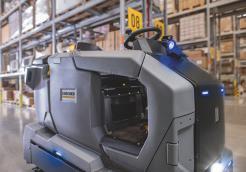
Adaptability to different automation levels has been built into the design. In partially automated facilities, an optional IO Box digital interface enables the robot to send control commands, such as opening or closing roller shutters. In fully automated environments, the machine can connect via the VDA 5050 communication standard to coordinate operations and define priorities with other automated systems, supporting integrated workflows. Two versions of the machine are available. The KIRA BR 200 uses roller brushes and a side brush, making it suitable for textured surfaces and the removal of coarse debris such as wood shavings or paper fragments. The KIRA BD 200 features a disc brush head for smooth floor types such as PVC or linoleum. www.karcher.com
Werner & Mertz Professional has introduced TAWIP neo, a floor care product formulated with water-soluble biopolymers derived from European chicory root. It provides an alternative to petroleum-based polymers, is fully biodegradable and free from microplastics. It already complies with EU Regulation 2023/2055 on microplastics.
TAWIP neo is designed to close both biological and technical cycles. Its plant-based biopolymer does not compete with food production, while the packaging is made entirely from postconsumer recycled material. The surfactants are sourced from renewable raw materials, with 73 per cent of organic carbon derived from plants.
Certified with the EU Ecolabel, it can be used on most floor types. It functions as a combined cleaning and care agent without waxes or build-up, offering slip resistance in line with DIN 18032-2.
wmprof.com
Wetrok says its Spin BeFree cordless machine for floor cleaning combines the familiar feel of a mop with the power of a scrubber dryer. Designed for cleaning tight, sensitive or high-traffic areas, it’s compact and ergonomic.
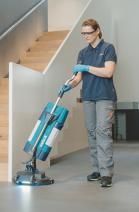
Thanks to its Ergo Handle and forward-driving motion, SpinBeFree is said to reduce strain on the back, wrists and
shoulders. The proven brush and pad technologies guarantee optimum cleaning results even on stubborn dirt while the integrated feed pump ensures a consistent water supply regardless of tank level.
SpinBeFree is also easy to clean, with tanks that can be 100 per cent manually washed, for optimum hygiene in everyday use. And its compact shape and design allow for space-saving storage. wetrok.com
Tennant Company has introduced the X6 ROVR, an autonomous scrubber designed for a range of large indoor environments. The mid-sized machine features a 26-inch dual-disc scrub path and 25-gallon solution and recovery tanks, enabling it to clean areas of up to 75,000 square feet per cycle. It is intended for use in airports, retail centres, warehouses and healthcare facilities.
The machine operates on a lithium-ion battery that provides up to six hours of runtime. It uses 3D LiDAR sensors and adaptive navigation to function in environments with moving obstacles and varying layouts. The machine can also connect to an optional XC1 docking station, allowing automated recharging between cleaning cycles.

X6 ROVR runs on BrainOS technology, allowing integration into existing cleaning operations and fleet management systems. Data collection, safety features and scalability have been incorporated to meet the needs of modern facility managers. www.tennantco.com
SYR has developed the SmartGuard Double Bucket system to improve hygiene, efficiency and sustainability. The system separates clean and dirty water into two chambers, preventing recontamination and ensuring only fresh solution is applied to the floor. This approach extends the lifespan of the cleaning solution, reduces the frequency of refills and maintains consistent hygiene standards says the company.
Used with a microfibre flat mop, SmartGuard enables effective cleaning while reducing the consumption of water and chemicals. Its design also takes operator safety and comfort
into account, featuring smoothrolling castors, a stable wringer and a balanced frame that helps to minimise physical strain during use.
According to SYR, cleaning activities contribute significantly to daily water consumption, with UK figures averaging around 150 litres per person per day. By maintaining cleaner water for longer and reducing wastage, SmartGuard supports efforts to lower water use.
syrclean.co.uk
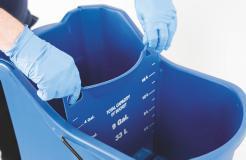
Polyurethane elastomers are increasingly replacing natural rubber as a material for suction squeegees in scrubber dryer applications - says Fimor, manufacturer of the serilor CLEAN product. Originally used where resistance to chemicals and oils was required, polyurethane is now preferred more broadly due to its extended service life and cost-effectiveness.
In terms of construction, manufacturers have moved towards triple-hardness squeegee designs, the company says. These combine layers of differing hardness to improve performance and durability. The intermediate layer functions as a wear indicator, helping maintenance planning. A more recent development is the reversed triple-hardness structure, where two harder outer layers surround a softer inner core, offering better protection and sustained flexibility. www.fimor.com
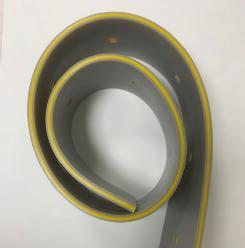

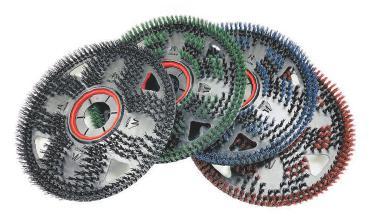

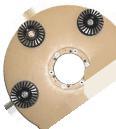




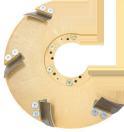






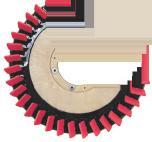



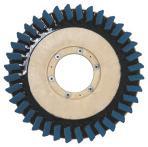
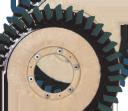




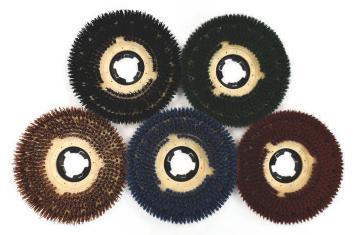

Today’s cleaning and facilities professionals are being asked to do more with increased oversight, less time and higher expectations than ever before. In this highpressure environment, smart auditing tech is empowering frontline teams, supporting regulatory alignment and helping businesses achieve operational clarity and cultural cohesion. Francis Lyons, cofounder and CEO of ECAT Group, explains how smart auditing tech is evolving into a real-time performance enabler.
From reactive to real-time: the rise of altitude reporting
In the past, auditing was largely retrospective. Managers reviewed paper trails, investigated inconsistencies and manually compiled reports. It worked… up to a point. But today’s challenges demand faster insight and more responsive action.
Smart auditing tech offers what I call ‘altitude reporting’ - a real-time, bird’seye view of operations. These platforms gather and analyse live data from cleaning and hygiene activities across multiple sites, enabling managers to spot anomalies, monitor compliance and intervene where necessary. Whether adjusting cleaning and facilities services in response to footfall trends or identifying high-usage washrooms for more frequent cleaning, altitude reporting supports proactive, evidence-led decision-making.
This shift from retrospective review to real-time insight marks a significant cultural step, from catching problems to anticipating them.
Navigating diverse regulatory environments
ACROSS EUROPE, cleaning and facilities professionals are being asked to do more with increased oversight, less time and higher expectations than ever before. Whether operating in healthcare, education, transport, or commercial environments, organisations face intensifying demands for transparency, traceability, and assurance.
In this high-pressure environment, smart auditing tech is empowering frontline teams, supporting regulatory alignment and helping businesses achieve operational clarity and cultural cohesion. No longer confined to reactive, checklist-driven oversight, smart auditing tech is evolving into a real-time performance enabler.
But what does that shift look like in practice? And why is it gaining momentum now?
While regulatory frameworks vary across countries, one constant is the growing expectation for traceable, auditable processes.
Smart auditing tech supports this by creating a centralised, standardised and timestamped record of cleaning activity. Features such as near-field communication (NFC) tagging, photographic proof-ofperformance, and automated task logs ensure organisations can demonstrate compliance - to external regulators, internal quality teams and/or thirdparty stakeholders.
In some countries, the digitisation of hygiene and cleaning compliance is accelerating. For example, within the EU, developments in data privacy, environmental reporting and occupational safety are prompting cleaning and facilities professionals to re-examine how they gather and manage performance data. In
this climate, smart auditing tech isn’t just a helpful tool - it’s a strategic necessity.
Supporting sustainability goals
Sustainability is no longer an optional extra. Increasingly, cleaning and facilities services are expected to reduce environmental impact while maintaining exceptionally high standards. Smart auditing tech can support this in several ways:
• Paperless reporting - Switching from physical checklists to cloud-based systems reduces paper consumption and streamlines communication
• Chemical tracking - Some systems now allow operatives to scan product QR codes, verifying safe and efficient use. This is critical for environmental compliance and health and safety
• Usage-based scheduling - By monitoring traffic patterns or occupancy, audit platforms can adjust cleaning frequency dynamically, minimising over-servicing and waste.
Together, these features help to reduce resource consumption, improve carbon performance and embed sustainability into day-to-day operations. These goals are increasingly aligned with tender requirements and corporate environmental, social and governance (ESG) strategies.
One of the most overlooked, but transformative, impacts of smart auditing tech is cultural.
In the past, auditing and compliance was often perceived as a top-down control mechanism, more about catching mistakes than recognising effort. But today’s platforms offer a different approach - one that emphasises enablement, transparency and recognition.
With the ability to log work, capture proof of quality and highlight improvement opportunities, cleaning professionals can demonstrate the value of their work. Managers, in turn, gain visibility of effort and outcomes. This can help to improve trust, loyalty and engagement across teams.
I’ve personally seen numerous cases where operatives who were previously disengaged become strong advocates. Because smart auditing tech gave them a voice, visibility and a tangible way to demonstrate their contribution.
This matters at a time when recruitment and retention remain pressing challenges across the cleaning sector. Giving staff pride in their work, and tools that support their success, is a win-win for service delivery and culture.
Looking ahead, smart auditing tech will play an increasingly strategic role in connecting frontline operations with broader business goals.
We’re already seeing integration between audit tools and wider enterprise systems - linking quality scores to contractor performance, triggering alerts for missed KPIs or embedding hygiene data into ESG reports. In some advanced settings, smart auditing platforms are even being linked to building management systems, enabling cleaning to respond to occupancy or air quality in real time.
But the promise of connected, intelligent auditing isn’t just about automa-
tion - it’s about agility. In a sector facing tighter margins, shifting expectations and increasing regulatory scrutiny, the ability to adapt quickly and act confidently is key.
Across Europe, the pressure is on cleaning and facilities services. But there’s potential for smart auditing tech to support. As audit and compliance tools evolve,
they’re no longer just about oversightthey’re engines of improvement, engagement and assurance.
For those willing to reimagine what auditing and compliance can be, the opportunities are clear: cleaner buildings, stronger compliance, engaged teams and a more sustainable future.
ecat-group.com

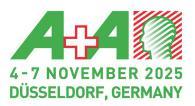
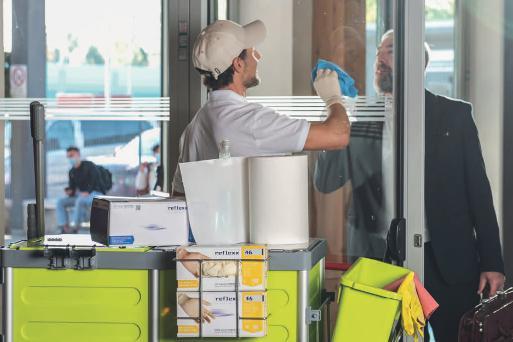


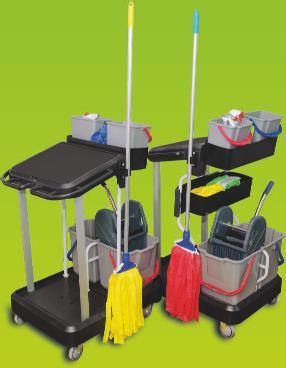

Mike Wallace at US Battery offers an overview of the various battery types that can be used with professional cleaning machines.
THE INCREASING AMOUNT of batterypowered equipment in the professional cleaning sector provides a benefit for those companies - and the industry in general - wanting to be energy efficient and environmentally friendly. As an example, all battery-powered cleaning machines require the use of deep-cycle batteries but over the decades significant advancements in battery technology allow for more choices of various chemistry (battery types) to come to the forefront.
The battery types that are available on the market include Flooded Lead Acid (FLA), Advanced Glass Matt (AGM), and Lithium Ion (Li). The reason all three exist, and why none of them have been phased out, is that each of these chemistries provide certain benefits in specific applications, usage and recyclability. Here’s a way to fully understand each battery type, with their benefits and drawbacks.
Flooded lead-acid (FLA) batteries are the industry standard and are still widely used because they are safe, costefficient, reliable and offer a wide range of capacities. Given the fact they are nearly 100 per cent recyclable, it makes them a good choice for those who are also environmentally conscious. Updates to the modern FLA battery include improved initial capacity, faster cycle-up to peak capacity and enhanced cycle-life from the advancements of using tetrabasic lead sulphate crystals formed in a more uniform pattern for positive electrodes. Although advances have made FLA batteries more cost-efficient and longer lasting, they do require regular maintenance in the form of periodic water replacement and cleaning. It’s important to make sure these batteries are kept
fully charged to prevent sulphation and to avoid freezing in cold weather.
Benefits: The most cost effective battery power; nearly 100 per cent recyclable: long cycle life; extremely reliable and used in many industries.
Drawbacks: Heavy (compared to Li batteries of the same voltage and amphour rating); require maintenance (need to check electrolyte levels and refill with water); must be kept fully charged during storage or batteries need to be charged (boost charger or equalising charge) after certain period of storage time; requires ventilation.
Absorbed Glass Mat (AGM) lead acid
Absorbed Glass Matt (AGM) batteries are very similar to flooded lead acid batteries with the key difference being the sealed construction of AGMs. The electrolyte is contained in absorbed glass mats that surround the battery’s electrodes, very similar to a sponge. The batteries are sealed and thus require no maintenance. These batteries have also continued to advance in design through improved positive electrode corrosion resistance and the addition of carbon-enhanced negative active materials to improve charge acceptance. AGM batteries have a higher cost compared with FLA batteries but they are an excellent option for applications with difficult-to-access battery compartment, because the vented gases during charging had been minimised by the valves installed on the batteries. They also have the same advantages as FLA batteries such as recyclability, safety and robustness. This makes them a great choice for those looking for maintenance-free batteries without the high cost of lithium-ion.
Benefits: no maintenance; nearly 100 per cent recyclable; spill-proof and shock resistant; can withstand colder temperatures (compared to FLA batteries); can be used in smaller spaces with less ventilation; low self-discharge rate.
Drawbacks: Higher in cost (compared to FLA batteries of the same voltage and amp-hour rating); shorter cycle life than
FLA Batteries in heavy duty (deep cycle) condition; heavy (compared to Li batteries of the same voltage and amp-hour rating)
Lithium Ion
Lithium-ion batteries with LFP chemistry are safe, require zero maintenance, have reduced weight, are faster charging and have a higher average cycle life compared to other battery types. Since cycle life claims on Lithium batteries are wideranging - anywhere from 2,000 to 5,000 cycles - this is often based on individual cell testing and can be very misleading. Compare with your current battery’s amphour (Ah) rating to start, or add one with a higher Ah rating if you need more capacity from your cleaning machine. Most Li batteries have built-in Battery Management System (BMS), that constantly monitors battery status. Some Li batteries have UL Certification and IP ratings to ensure they are safe to use in cleaning machine environments, so dirt and moisture aren’t a problem. Beware of batteries that are labelled, ‘Meets UL Standards’ as they are not tested or have actual UL Certification.
Benefits: No maintenance; built-in Battery Management System (provides safety, charge status and protection of lithium cells); longer cycle life; reduced weight (compared to similar voltage and amp-hour rating of other chemistries); low self discharge rate; roughly four to five times the cycle life compared to other battery types.
Drawbacks: Higher cost (compared to similar voltage and amp-hour rated chemistries); not recyclable; some Li cell types are better than others (check with manufacturer).
Knowing the benefits of each battery type can help cleaning professionals make an informed decision on the next set of batteries for their cleaning machines. As machines become more efficient, the way they are powered also becomes more important to efficiency and maintaining a handle on overall costs.
www.usbattery.com

Trojan’s AES AGM batteries are designed for use in a range of floor cleaning machines, including ride-on, stand-on and walkbehind scrubbers, sweepers and burnishers. The batteries are designed to deliver consistent performance while reducing maintenance requirements, as they do not require watering. Built to tolerate vibration, shock and varying environmental conditions, they operate within a temperature range of -40°C to 60°C. The design incorporates 80 per cent recycled materials and is 99 per cent recyclable, supporting sustainability goals within the cleaning sector. The batteries also feature power throughput suited to partial state of charge operation, enabling quicker charging and reliable energy delivery during frequent use. Trojan offers the AES AGM batteries in DIN sizes with a three-year warranty. www.trojanbattery.com
TAB has expanded its range of energy solutions with the Motion Gel battery, which combines Valve Regulated Lead Acid (VRLA) technology with a durable design for use in demanding environments. The battery is built with gravity-cast positive pasted plates and a gel-immobilised electrolyte, providing spill-proof operation and protection against acid stratification. Its sealed construction allows for maintenance-free use, removing the need for topping up or inspection.
The Motion Gel battery’s low self-discharge rate of less than two per cent per month makes it suitable for long-term storage and transport. The absence of corrosive exhaust gases
supports safe use in sectors such as food processing and pharmaceuticals, where air quality and contamination control are important. A reinforced polypropylene casing increases resistance to vibration, shock and temperature variation, enhancing reliability in both indoor and outdoor conditions.
The battery can be used across multiple sectors, including floor cleaning machines and electric vehicles, where consistent and clean power is required. In parallel, TAB continues to develop its lithium battery portfolio for the cleaning industry, with a focus on energy efficiency, reduced charging time and operational flexibility for both walk-behind and ride-on equipment. The Motion Gel and Motion Lion ranges reflect the company’s approach to supporting safety, reliability and reduced environmental impact in commercial cleaning and industrial operations. www.tabbatteryuk.com
NexSys TPPL batteries have been introduced as a maintenance-free power option for floor care machines including scrubbers, sweepers, burnishers and extractors. Based on Thin Plate Pure Lead (TPPL) technology, the batteries are designed to offer a longer service life and faster charging compared with traditional lead-acid and gel models.
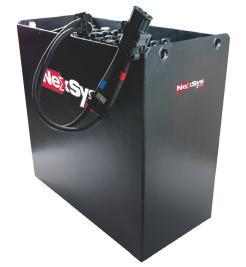
The sealed design removes the need for watering and reduces the risk of electrolyte spills, making the batteries suitable for use in environments such as hospitals, schools, warehouses and public facilities where cleanliness and safety are priorities.
According to the manufac-
turer, NexSys TPPL batteries can remain idle for extended periods without performance loss, which may benefit facilities with seasonal or intermittent cleaning schedules. Their energy efficiency and ability to accept opportunity charging are intended to support continuous use with minimal downtime. These features are aimed at helping cleaning teams maintain operational consistency while reducing maintenance demands and associated costs.
The batteries’ design and performance characteristics align with the growing demand in the cleaning industry for power systems that support reliability, reduced servicing and improved safety across a range of applications.
www.enersys.com
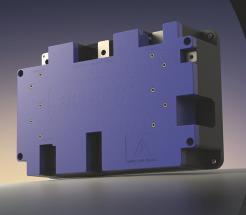
BSLBATT has launched its fourth generation Integrated Relay System, a new design that combines wiring harnesses and components into a single compact module for use in traction lithium batteries. The system is intended to improve safety and simplify maintenance by removing the need to dismantle contactor assemblies, thereby reducing potential risks for technicians.
It is aimed at applications such as floor cleaning machines, aerial work platforms, golf carts and materials handling equipment. The simplified structure is designed to make servicing quicker and minimise equipment downtime. The new system also includes a solid-state architecture capable of supporting cloud connectivity, reflecting the increasing focus on connected and data-enabled energy solutions in the European market.
According to the company, the
Integrated Relay System has been developed to enhance operational reliability while aligning with the transition towards more integrated and intelligent battery management technologies. bslbatt.com
US Battery’s ESSENTIAL Li Lithium-Ion deep-cycle batteries boast extended performance, zero maintenance and reliability. Available in maintenance-free GC2 sizes, these models are compatible with most batterypowered cleaning machines. The 24VGC2 comes with an eight-year warranty and offers over 3,000 cycles.
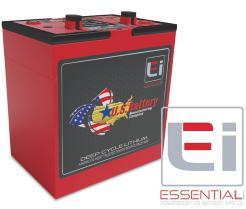
Thanks to the Battery Management System (BMS) that monitors the unit, there’s no guessing about the status or state of charge. An integrated LED indicator on top of the battery delivers operators with real-time information from the BMS. Alternatively, the battery can be connected to an external remote display on the cleaning machine.
The IP67-rated battery cases are waterproof and UL2271 certified for use in Light Electric Vehicles (LEV).
According to US Battery, its ESSENTIAL Li deep-cycle batteries also significantly reduce cleaning machine downtime and operating costs by achieving a full charge in less time.
www.usbattery.com
Among its launches at the CMS exhibition in Berlin, Kärcher introduced its first stick vacuum cleaners designed for professional use, available in 18 V and 36 V battery-powered versions, suitable for spot cleaning and smaller surface areas where mobility is required.
The LVS models feature a compact and functional design, with controls intended to simplify operation. Each model is constructed for durability and uses a dust container and cyclone filter system, removing the need for disposable filter bags and reducing the use of consumables.
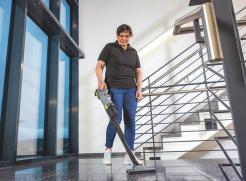
The LVS 1/1 Bp model is lightweight and supplied with a floor nozzle, crevice nozzle and an accessory holder on the suction tube. It is also compatible with accessories that meet the DN 35 standard. The LVS 1/2 Bp version includes an active floor nozzle with a rotating brush suitable for carpets and hard flooring, along with a crevice nozzle.
Both models use air circulation within the dust container to separate coarse dirt from fine dust particles. Fine dust is retained in a two-stage filter unit made up of a cyclone filter and a HEPA 13 filter, which can be cleaned or replaced when necessary. Larger debris is collected in a 0.35-litre dust container, which can be removed and emptied by releasing two clips.
Users can choose between three operating modes - Power, Standard and Eco - depending on the cleaning task and surface type. Both models are compatible with Kärcher’s Battery Universe platform. The LVS 1/1 Bp uses 18 V rechargeable batteries, while the LVS 1/2 Bp operates with 36 V batteries. Depending on the configuration and level of soiling, run times range from approximately 60 to
80 minutes.
Both models can be attached to Kärcher’s FlexoMate cleaning trolley using a mounting bracket or stored on a wall bracket.
Also new is the Kärcher’s first full range of equipment for professional window cleaning. The Window Cleaning Kit has been developed in partnership with TTS and provides a case containing all the standard tools needed for window cleaning, so cleaning staff have everything they need to hand whenever they need it. The product also includes premium versions of washers and window squeegees, which are said to be lightweight and ergonomic to use: these have an adjustable tilt angle for use with a telescopic lance. All products are compatible with the Lampo quick-change system when used with an adapter.
The washer is lightweight and has small cavities in the cross strut that act as mini water reservoirs, supplying cleaning water to the cleaning textile. The non-slip handle on the window squeegee ensures cleaning staff can keep a firm grip. The kit also contains two washer covers, a glass scraper, a telescopic lance, a pack of microfibre cloths and an adapter for the Lampo quickchange system.
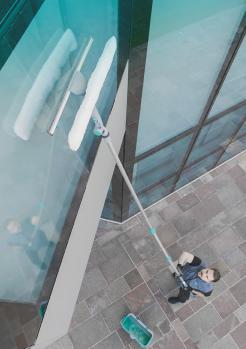
There’s also the Geminus kita combination of a washer and a window squeegee, which comes in handy when cleaning higher windows. Water and detergent are first applied to the window using the washer, then without even having to switch tools, the dirty water can be wiped off with the window squeegee simply by turning it over. www.karcher.com
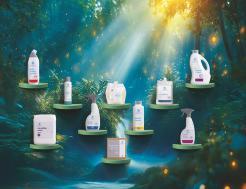
i-team Global has introduced the i-hygienic range, a new collection of plant-based cleaning and skincare products developed to offer a non-toxic and sustainable approach to professional hygiene. The range has been designed to support safe handling and environmental responsibility while maintaining cleaning efficiency across multiple applications.
The i-hygienic products hold non-classified status under the Globally Harmonized System (GHS) and the Classification, Labelling and Packaging (CLP) regulations. This means they are considered safe to handle, transport and store without special precautions. The formulations are biodegradable and skin-friendly, providing cleaning results comparable to conventional petroleumbased products claims i-team.
The range covers a number of cleaning applications including washrooms, floor care, surface cleaning, commercial kitchens, laundry, outdoor areas and machine dishwashing. Both concentrated and ready-to-use formats are available. As the products are non-classified, they can be used without personal protective equipment - though users are advised to continue following organisational safety procedures.
The line also aims to reduce environmental impact, with the plant-based composition contributing to lower CO2 emissions, as the raw materials absorb carbon dioxide during growth. Packaging for the i-hygienic products is carbon-negative, made entirely from renewable and recyclable materials - with savings equivalent to 1.8 kg CO2 per kilogram of packaging. Many of them hold Cradle to Cradle Certified Gold and EU Ecolabel certifications, with others currently under assessment. Additional certifications include NSF Foodsafe, Green Key and the Nordic Swan Ecolabel.
Ten product categories support clearer and faster selection, while online navigation tool helps the user select the right product for the task. Within each category, the solutions are grouped into four product segments: Daily Cleaners, Daily Specialists, HeavyDuty Cleaners and Troubleshooters and Specials.
Auto-dosing systems are available to ensure correct product usage and there are various packaging options including dispensers, bottles, tubes, jars and flow packs. The pods that are compatible with i-team cleaning machines, such as its flagship i-mop range, are also part of the collection.
www.i-hygienic.com
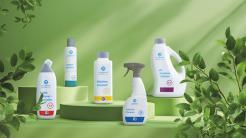
The Portavac BeFree is Wetrok’s professional backpack vacuum cleaner designed for maximum mobility and ergonomic comfort. It’s designed for cleaning narrow spaces, busy environments and hard-to-reach areas such as staircases or public transport. Inspired by the design of a Swiss hiking backpack, the washable and tool-free removable harness distributes weight evenly across the hips, significantly reducing strain on the back and shoulders. The low-mounted batteries shift the centre of gravity downward, enhancing carrying comfort even during longer cleaning tasks.
Cord-free operation eliminates the need for power outlets, enabling uninterrupted cleaning. Two battery options (5.0 Ah or 7.5 Ah) provide up to 68 minutes of runtime and the quick-charge function ensures the unit is ready for use in one hour. The suction power can be finely adjusted via a dial on the harness - helping to conserve battery or deliver full performance when needed.
A three-stage HEPA 13 filtration system captures even the finest dust particles. wetrok.com

To receive ECJ free of charge (subject to qualification), complete the form below.
Name ....................................................................
Address
Please tick just one box in each section.
Your company’s main business activity:
q Factory & industrial premises
q Offices & commercial premises (including banks)
q Contract cleaning/cleaning services
q Distributors/wholesalers
q Health authorities/hospitals/ nursing homes
q Central and local government
q Hotels/catering/recreation (including leisure centres)
q Education establishments (including universities, schools & colleges)
q Other (please specify)
Number of company employees:
Are you personally responsible for purchasing or specifying machinery, materials, products, equipment or support services used in the cleaning and maintenance of non-domestic establishments? q Yes q No
q None of the above.
Web
Please sign here only if you wish to receive a regular copy of European Cleaning Journal (the publisher reserves the right to accept or refuse application).
Signature
